‘Used Seagate EXOS HDDs Missold as ‘New – Other Drives Implicated
Now would be a very good time to check any hard drives you’ve purchased in the last 12 to 24 months! Recent reports from popular German news outlet Heise have raised increased reports of refurbished and modified SMART-reported drives being sold as brand new, leading to large concerns of widespread ex-cryptocurrency-burnt drives being sold through trusted business and domestic retailers. Although the scope of the issue seems to be largely focused on Seagate Exos data center-class drives, because of the wide-ranging drives that were used in Chia cryptocurrency mining several years ago, there is an increased likelihood that other large-capacity and high-durability drives should be considered, thanks to the relative ease of firmware modifications and larger quantities of HDDs being resold off the back of 5 year durabilities lines being crossed by the original coin miners!
UPDATED 20/02/25 (video HERE)
Reports are now arriving that Seagate Ironwolf and Ironwolf Pro modified/mis-sold HDDs are now also affected. The extent to this is still too early to confirm, but the latest reports from Heise indicate that 8TB and 16TB HDDs have been highlighted.
Further reports from ComputerBase via a community member fanatiXalpha provided further evidence and indications of this via the images from the original article here:
| REAL HDD | FAKE HDD |
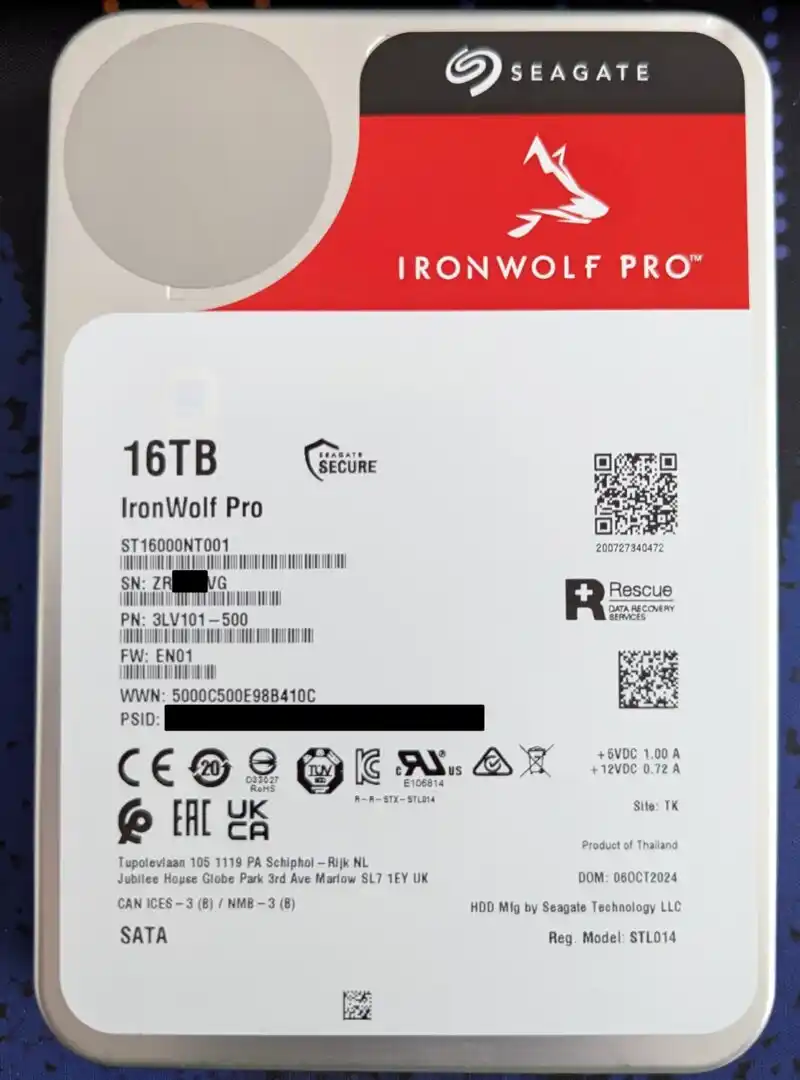 |
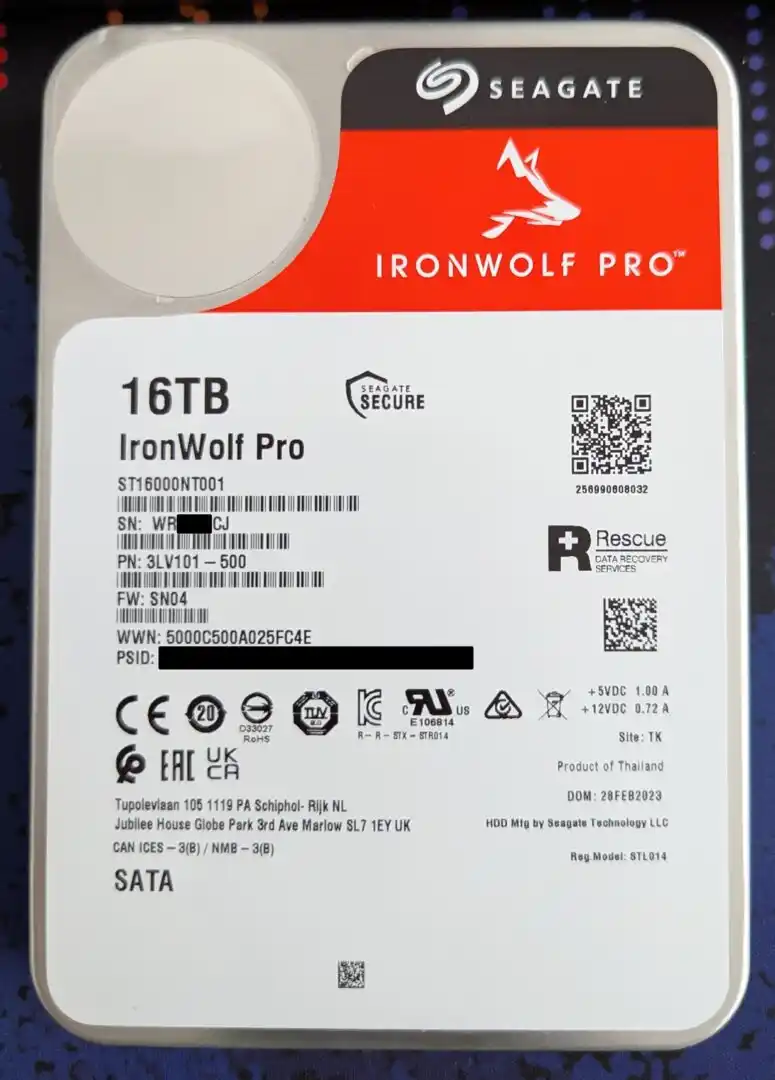 |
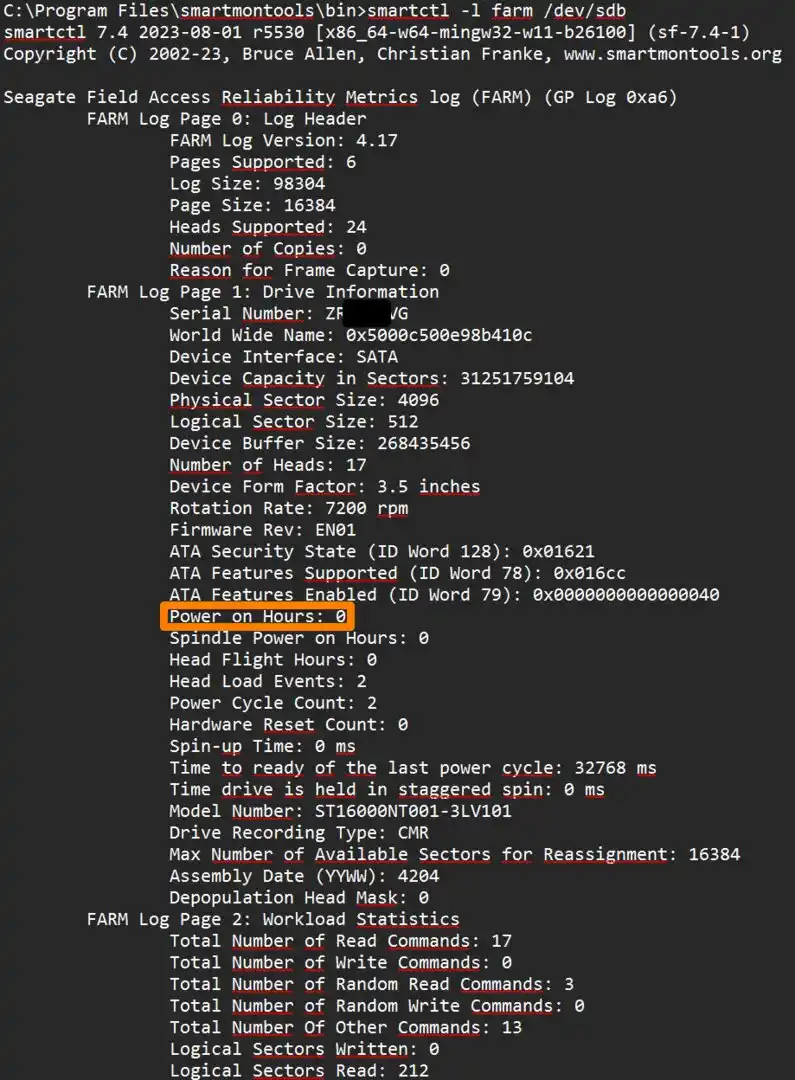 |
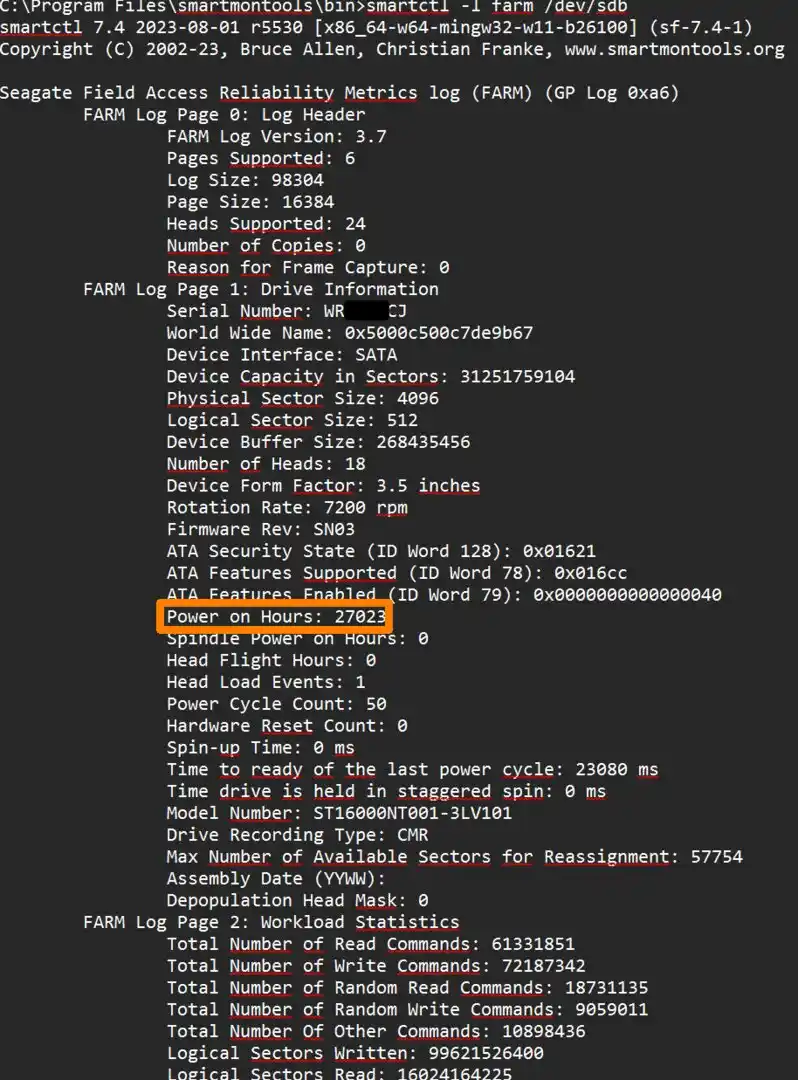 |
In this video I discuss multiple ways to initially identify issues with a ‘new’ Seagate Ironwolf HDD that do not involve connecting the HDD to a system. Later in this article cover several more methods that require connecting the drive to a NAS or general client system.
Another Example of a Fake HDD from user Busse:
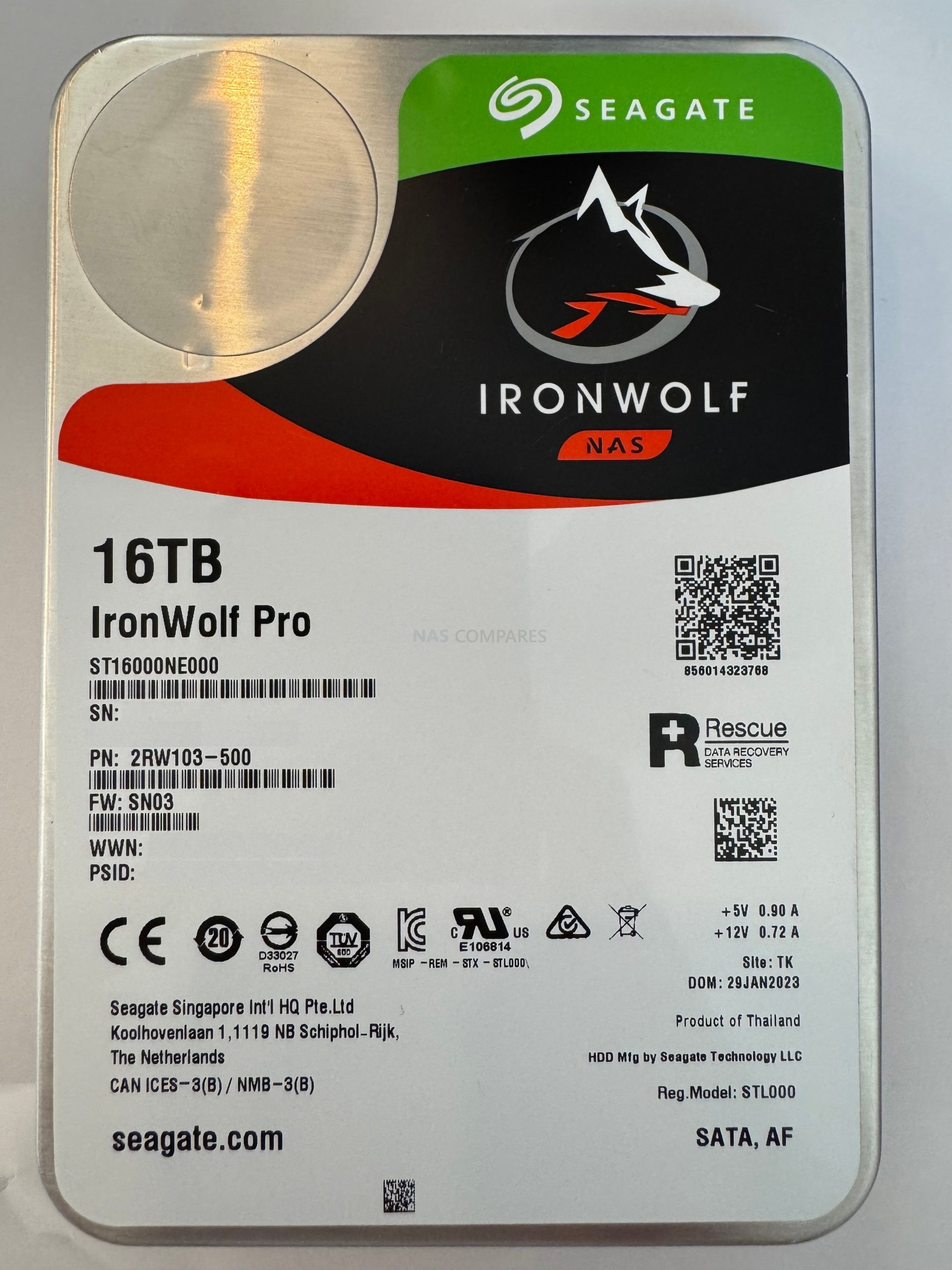
Original Article:
The Missold Hard Drive Issue – TLDR
![]()
-
Check Your HDDs – Reports indicate used Seagate Exos hard drives are being sold as new, particularly 12TB-18TB models.
-
Firmware Manipulation – SMART data shows zero usage, but deeper FARM tests reveal 15,000-50,000 hours of prior use.
-
Widespread Issue – Over 200 reports from buyers in Germany, Japan, Australia, and other regions, spanning multiple retailers.
-
Crypto Mining Connection – Many affected drives likely came from Chia cryptocurrency farms (2018-2022) and re-entered the market fraudulently.
-
Tampering in Supply Chain – Drives may have been repackaged and resold by wholesalers and distributors, bypassing Seagate’s official channels.
-
Retailers & Seagate Respond – Some retailers are issuing refunds/exchanges. Seagate denies involvement and is investigating the supply chain breach.
-
Verify Your Drives – Use SMART, FARM, Seatools, and warranty checkers to confirm if your drive is genuine. Report suspicious drives to Seagate and your retailer.
What has been reported on the Seagate EXOS HDD Misselling
Earlier in the year, Heise reported that they had received dozens of reports from users who had purchased brand-new, enterprise-class Seagate Exos hard drives, only to find that when receiving the drives, they had scuffs and marks on them that suggested they were used—and used en masse. Further investigation of the hard drives using popular firmware tools initially showed that the drives’ SMART data was indicating little to no power-on usage. However, deeper investigation with deeper drive tools went on to reveal that the firmware had been manually adjusted to hide the tens of thousands of hours that these drives had already accrued in use.
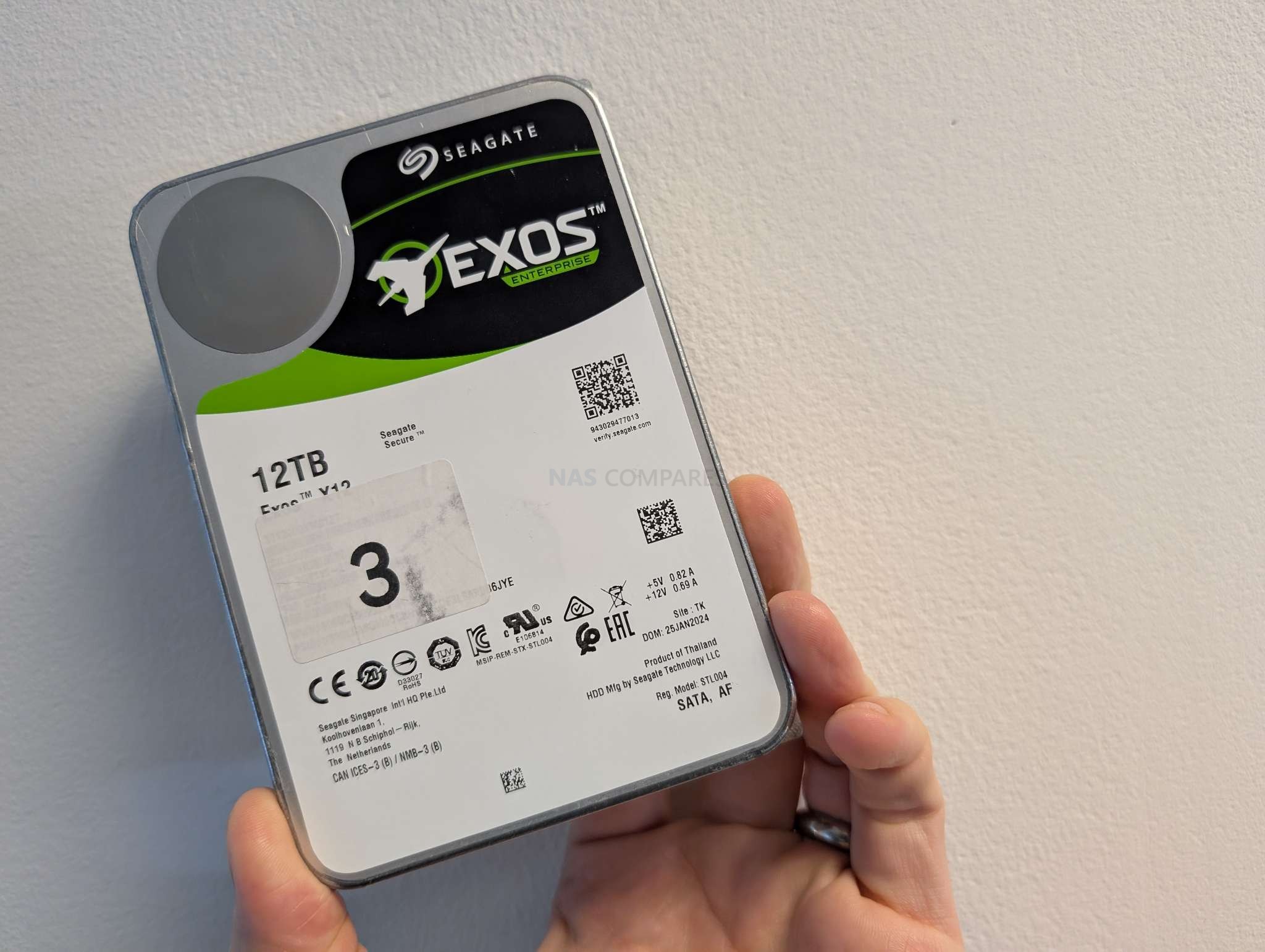
Usage on drives has varied from between 15,000 hours and 50,000 hours, well over five years of deployment and well outside the warranty and workload rating on these drives in most cases. What is interesting though, is that retailers that have been impacted by this, and in fact a wide-ranging number of German retailers, have been highlighted as sources of these drives. However, reported issues span outside of Germany and include claims from purchases made in Japan, Australia, and other parts of Europe.
Fingers are initially being pointed at wholesalers, large-scale resellers, and distributors who supply the traditional retail and e-commerce websites that most users would be eligible to purchase from. Depending on the retailer, and several have already been highlighted in the now over 200 reports submitted to Heise, the returns and RMA process does differ from site to site, but this does appear to be a growing issue that most users will not even realize they have been hit by unless they take the time to investigate the usage data on their drives.
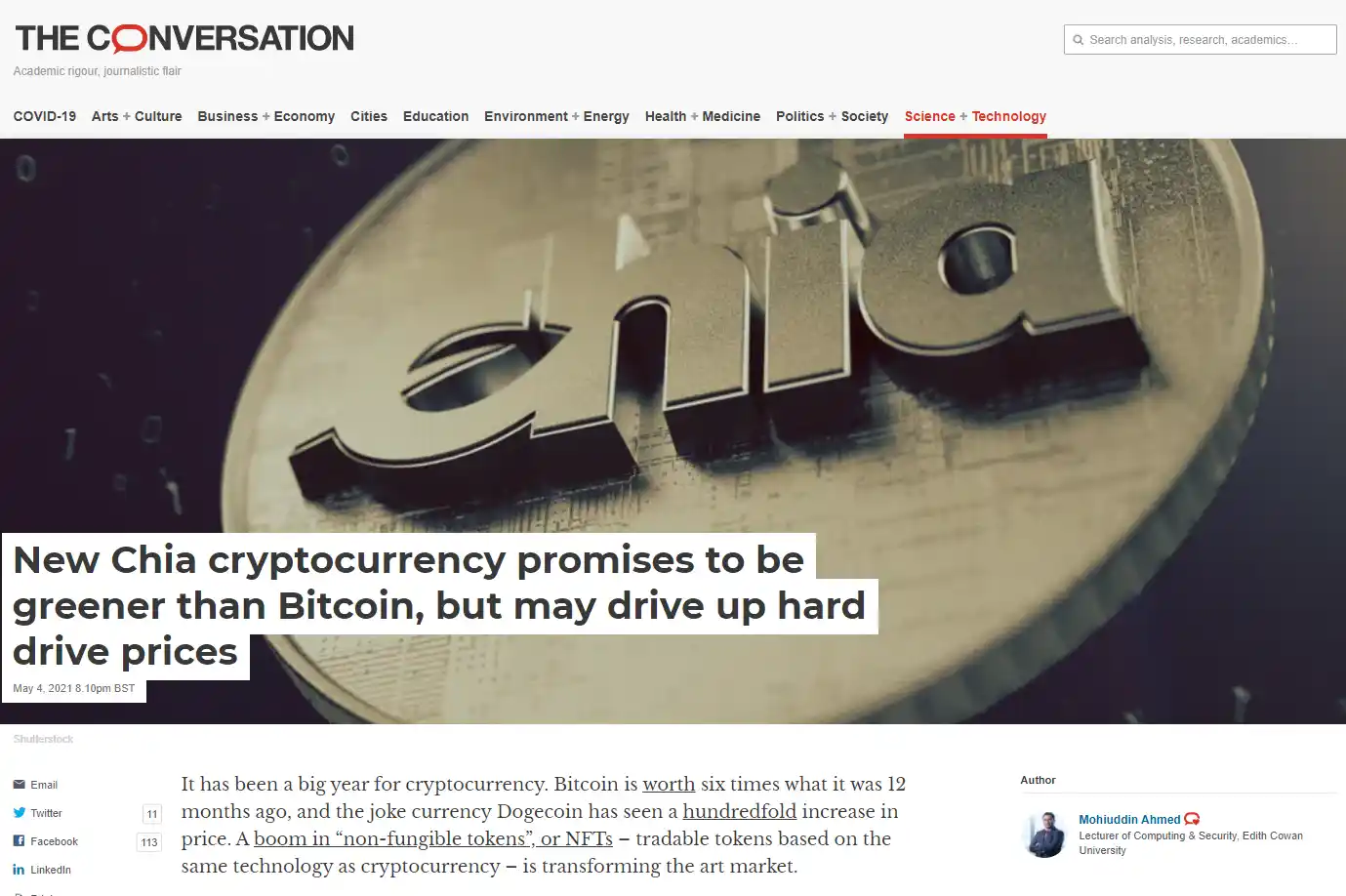
Primarily, Chia crypto farming has been highlighted as the origin of most of these drives, with huge quantities of large-capacity data center drives being purchased in 2018 to 2022, when this emerging and less GPU-centric form of cryptocurrency was being mined. Brands such as Seagate, WD, and Toshiba saw extraordinarily high sales numbers during this period for these drives, and equally, domestic users ended up being negatively impacted by supply shortages and price hikes. It seems that a lot of these drives that have either been abandoned from previously pursued cryptocurrency setups or just simply swapped out for ongoing farming have now made their way back into the supply chain under the guise of being regular, new, out-of-the-box drives!
The distribution channels, wholesalers, and affected e-commerce websites in order to ascertain how these drives have entered the supply chain and to what extent it has happened. They issued the following statement:
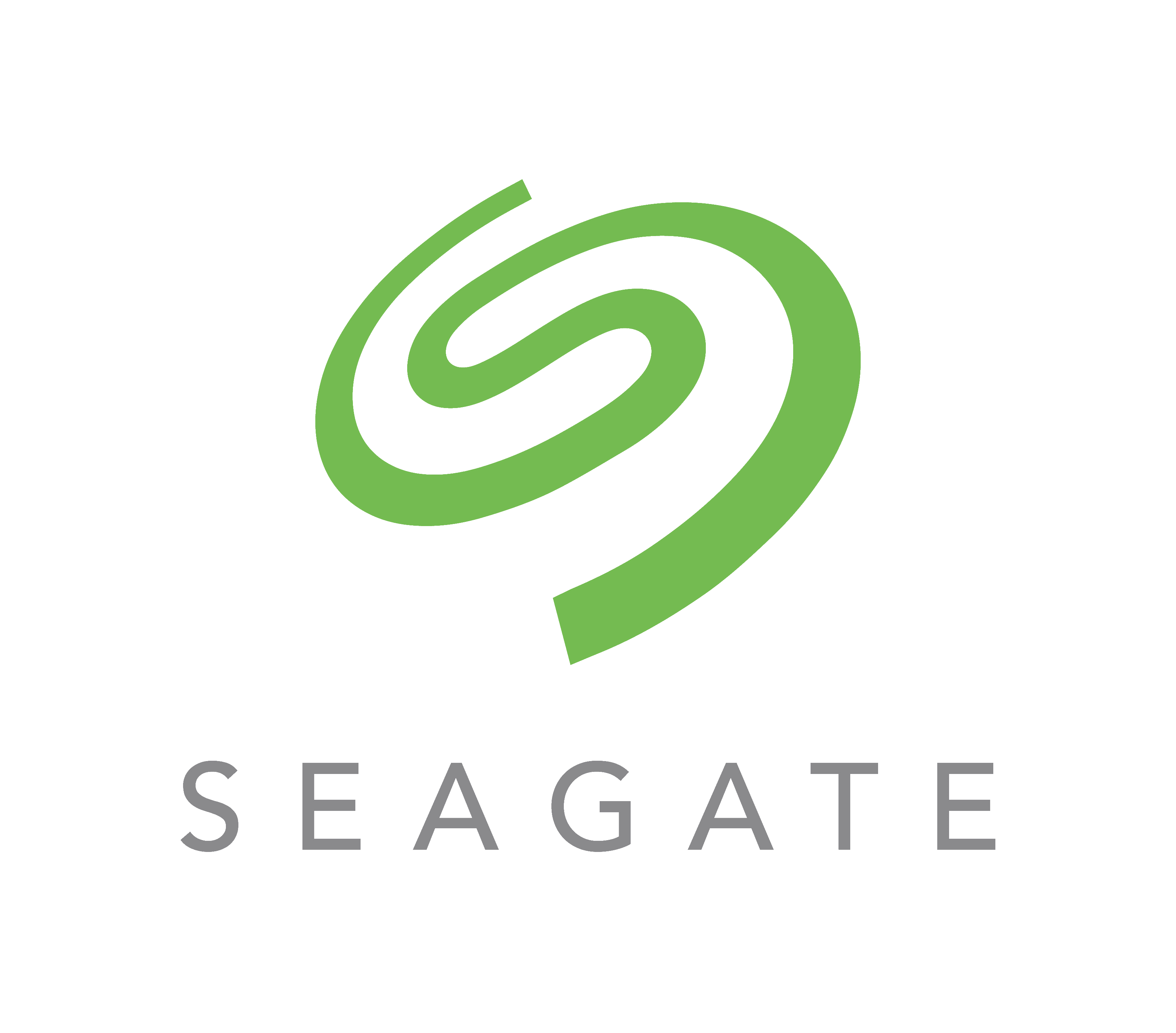
“We are taking this matter very seriously and are conducting a thorough investigation. As explained in the previous statement, Seagate did not sell or distribute these drives to retailers. We cannot provide details of the ongoing investigation, but we suspect that these drives are new products that Seagate sold to customers and were later resold by them on the used market. In this case, we believe that the drives were remarketed somewhere in the used market supply chain and resold as new. We recommend that retailers only purchase drives from certified Seagate distribution partners, as purchasing from certified Seagate distribution partners is the best way to ensure the authenticity of Seagate products for retailers and their customers.
Seagate has processes in place to investigate these types of cases, with teams working proactively with our vendors to take action where necessary. Our security team also regularly works with local authorities to take necessary action. Many investigations are initiated based on anonymous tips and reports from partners and customers. These measures are designed to protect Seagate partners and end customers in an increasingly global marketplace.
We encourage anyone who suspects they have received a used drive marketed as new to help with the investigation by reporting the incident to us directly at fraud@seagate.com . In addition, customers who have doubts about whether the products they purchased match the claims of the sellers can access our warranty checker tool . Suspicious drives and/or sellers can also be reported anonymously through our Ethics Hotline .
We are grateful for the trust our customers have placed in us and are determined to do everything possible to maintain that trust.” – Provided to Heise.de in response to the 200+ HDD Claims HERE 7/2/25
Which Hard Drives are affected/reported?
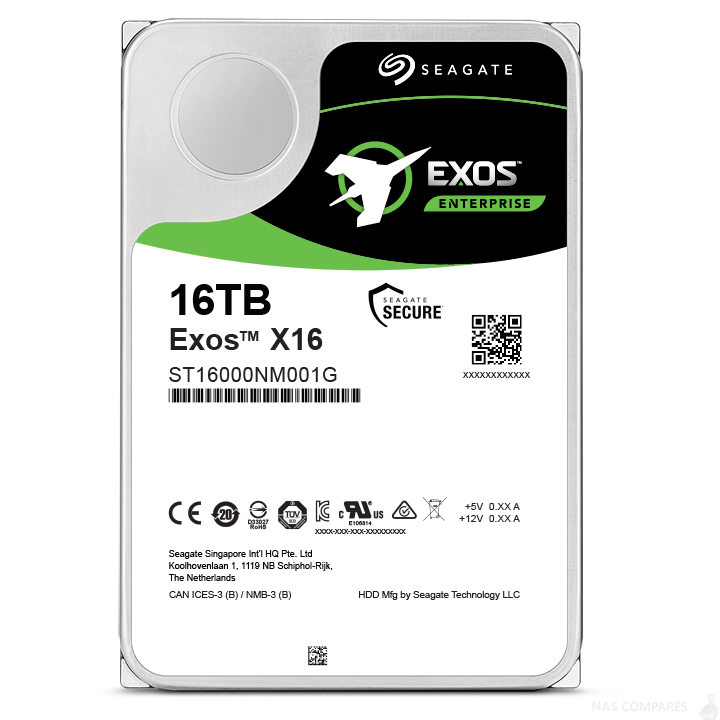
Currently, the bulk of aggregate reporting of this is going through the Heise website, and a lot of the submissions have been done via their anonymous reporting link, so exact model IDs are hard to track down right now. However, the bulk of the reported mis-sold drives appear to be Seagate Exos drives ranging from 12TB to 18TB. As mentioned earlier, however, the original reporting suggests that other drives have been highlighted by users. Realistically, it’s pretty unlikely that only Exos drives are going to be impacted as such. A wide-ranging procurement took place during the peak of Chia cryptocurrency farming, and pretty much any moderately durable, high-capacity hard drive was changing hands quickly at that time. This all does seemingly indicate right now that a lot of these drives are being offloaded with their firmware modified by one or a handful of bad actors, who likely are sitting on high quantities of the same hard drives. However, it would not surprise me whatsoever if over the coming months and years, we see spikes on affected drives outside of the Seagate Exos data center series.
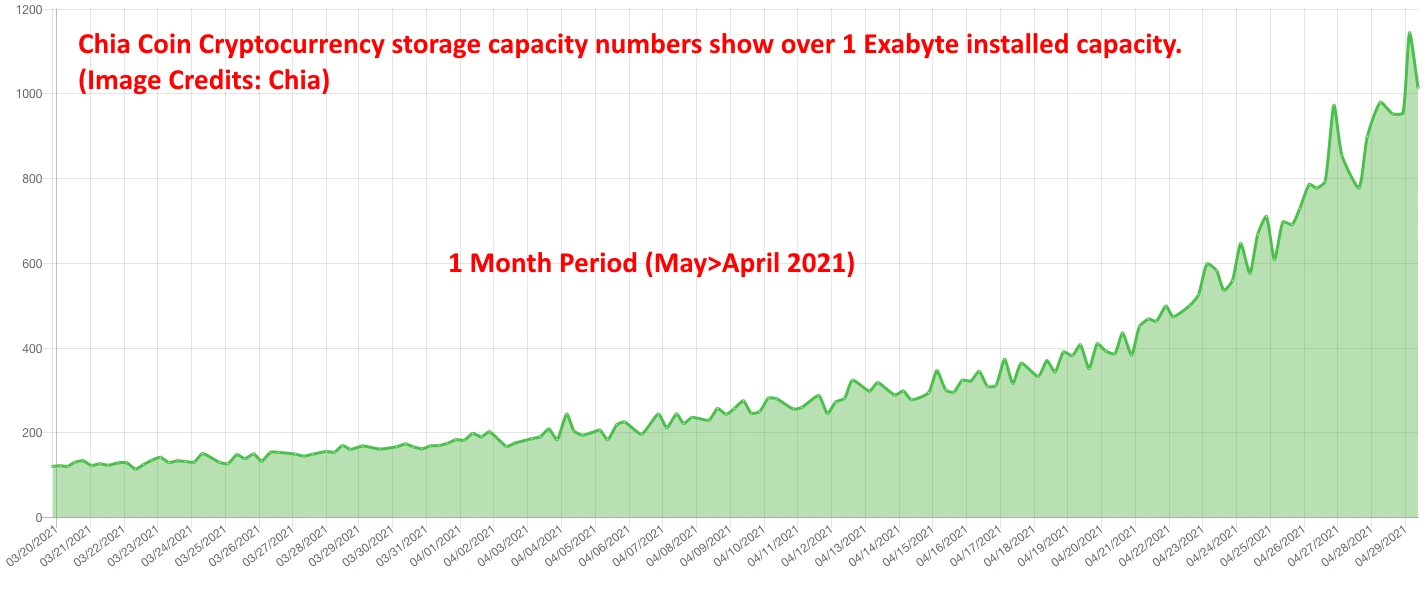
How Can I Check If My Drives Were Mis-Sold as New?
Tools:
There are multiple ways to check whether the hard drive inside your system, which you purchased as brand new, is actually new. However, the suitability of each tool will depend heavily on the system type and operating system your drive is running on. Seagate’s Seatools application allows you to check and validate multiple data points on your hard drives. However, it is only available as a Windows or Linux client, as well as a portable version. That means Mac users, or those less comfortable with command-line tools, may find it difficult to use—not to mention users who have multiple drives deployed in systems without a suitable GUI or command-line interface for validity checks. Below, I’ve broken down recommended tools and commands that you can use to verify your drives, their power-on hours, and other critical details.
How NAS users can Check and Verify the usage of the HDDs:
![]()
NAS users who suspect their drives may have been mis-sold as new can verify their SMART data and power-on hours using various tools. Most NAS operating systems, including Synology DSM, QNAP QTS, TrueNAS, and UnRAID, have built-in SMART monitoring tools within their storage manager or disk health sections. These tools provide essential SMART attributes, including Power-On Hours (POH), Reallocated Sectors, and Drive Temperature. However, in some cases, the SMART data may have been manipulated to show zero usage, making further verification necessary.
For deeper analysis, users can SSH into their NAS and install smartmontools, a command-line utility that provides detailed drive health reports. Running the command:
smartctl -a /dev/sdX
(where X is the drive identifier) will display all SMART attributes, including power-on hours. However, if the SMART data has been reset or manipulated, users can check the FARM (Field-Accessible Reliability Metrics) values for a more accurate picture of a drive’s actual usage history. To retrieve FARM values, NAS users can use:
smartctl -l farm /dev/sdX
This will reveal true power-on hours, drive usage patterns, and whether a drive has been extensively used before being reintroduced into the supply chain.
For those using QNAP or Synology NAS devices without direct access to smartmontools, Seagate’s Seatools (Windows/Linux) can be used by connecting the drives externally via a USB or SATA dock. Additionally, Seagate’s warranty checker tool allows users to verify if their drive was originally part of a multi-drive batch—a red flag that it may have been previously used in a server or data center environment.
How NAS Users Can Check SMART Data and Power-On Hours Over SSH (Including FARM Values for Verification & Integration with Smartmontools)
NAS users with SSH access can perform a deeper, more accurate verification of their hard drives’ SMART data and power-on hours to detect possible tampering. While many NAS systems, such as Synology DSM, QNAP QTS, TrueNAS, and UnRAID, provide built-in SMART monitoring via their web interface, these tools often rely on basic SMART queries, which may not reveal manipulated or reset power-on hours. By accessing the NAS via SSH, users can run Smartmontools directly, allowing them to extract FARM (Field-Accessible Reliability Metrics) values, which are not included in standard SMART logs.
To begin, users should SSH into their NAS and install Smartmontools if it is not already available. On Debian-based NAS systems (such as OpenMediaVault, TrueNAS SCALE, and some QNAP models running Debian Linux), install Smartmontools with:
sudo apt update && sudo apt install smartmontools
On Red Hat-based systems, use:
sudo yum install smartmontools
For NAS systems that do not allow package installations, users can still manually compile Smartmontools or install a Docker container that includes the tool.
Once Smartmontools is installed, running the command:
smartctl -a /dev/sdX
(replacing X with the correct drive identifier) will display SMART attributes, including Power-On Hours (POH). However, since bad actors can manipulate SMART data to show zero hours, users should perform an additional FARM query with:
smartctl -l farm /dev/sdX
Unlike SMART power-on hours, which can be reset, FARM values track long-term reliability metrics stored at a deeper firmware level, making them much harder to falsify. If there is a discrepancy between SMART-reported power-on hours and FARM-reported power-on hours, it strongly suggests that the drive has been used before but was manipulated to appear new.
Integrating Smartmontools into a NAS for Automated Checks
To automate drive health monitoring, NAS users can schedule periodic SMART and FARM scans using cron jobs or integrate them with the NAS system’s notification service.
-
Create a SMART Monitoring Script
Users can create a simple script to check SMART and FARM values for all installed drives and log the results.
#!/bin/bash
LOGFILE=”/var/log/smart_check.log”
echo “SMART Check – $(date)” >> $LOGFILE
for DRIVE in /dev/sd[a-z]; do
echo “Checking $DRIVE…” >> $LOGFILE
smartctl -a $DRIVE >> $LOGFILE
smartctl -l farm $DRIVE >> $LOGFILE
done
Save this script as smart_check.sh and make it executable:
chmod +x smart_check.sh
2. Schedule Automated Checks with Cron
Users can schedule the script to run daily or weekly using cron.
Open the cron editor:
crontab -e
Add a line to run the script every day at 2 AM:
0 2 * * * /path/to/smart_check.sh
Set Up Email Alerts for Failures
To receive email alerts if issues are detected, modify the script to check for critical SMART attributes and send an email if problems are found:
#!/bin/bashLOGFILE=”/var/log/smart_check.log”EMAIL=”user@example.com”echo “SMART Check – $(date)” >> $LOGFILEfor DRIVE in /dev/sd[a-z]; dosmartctl -a $DRIVE | tee -a $LOGFILE | grep -i “Pre-fail\|Reallocated_Sector_Ct\|Power_On_Hours”smartctl -l farm $DRIVE >> $LOGFILEdone# Email log if issues detectedif grep -q “Pre-fail\|Reallocated_Sector_Ct” $LOGFILE; thenmail -s “SMART Error Detected on NAS” $EMAIL < $LOGFILEfi
By leveraging SSH, Smartmontools, and automated monitoring, NAS users can go beyond surface-level diagnostics and ensure they are not just scraping the same potentially manipulated data, but actually verifying their drives’ true usage history.
How Desktop Windows users can Check and Verify the usage of the HDDs:
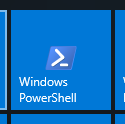
Desktop users can verify the SMART information and power-on hours of their hard drives using several tools, including Smartmontools 7.4+, CrystalDiskInfo, and Seagate’s Seatools. The easiest method is using CrystalDiskInfo, a free GUI-based tool for Windows that displays critical SMART attributes, including Power-On Hours (POH), Reallocated Sectors, and Drive Health Status. However, if a drive has been tampered with, its SMART data may have been reset, making further verification necessary.
For deeper inspection, users can install Smartmontools 7.4 or later, which provides advanced diagnostics, including FARM (Field-Accessible Reliability Metrics) values, which can reveal the drive’s true runtime history. To check SMART data, open a command prompt (or terminal in Linux/macOS) and run:
smartctl -a /dev/sdX
(replacing X with the correct drive letter) to view detailed SMART attributes. If the reported power-on hours seem too low or suspiciously reset, users can retrieve FARM values by running:
smartctl -l farm /dev/sdX
This command will reveal the actual power-on hours and potential prior usage, even if the SMART data was modified.
Alternatively, Seagate’s Seatools (available for Windows and Linux) can run extended drive diagnostics, check SMART status, and validate warranty details. Users can also enter their drive’s serial number into Seagate’s warranty checker tool to confirm if the drive was originally sold as part of a batch, which may indicate prior data center or enterprise use.
How Mac users can Check and Verify the usage of the HDDs:
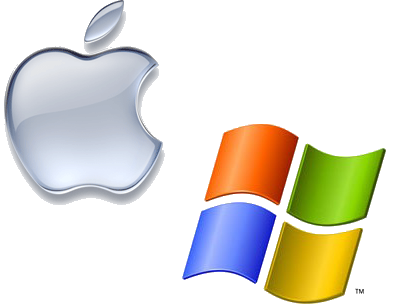
Mac users can verify SMART data and power-on hours using Smartmontools 7.4+, Seagate’s Seatools for Linux (via a bootable drive), and third-party macOS utilities like DriveDx. Since macOS does not provide built-in SMART monitoring tools, users need to install Smartmontools via Homebrew by running:
brew install smartmontools
Once installed, users can check SMART attributes, including power-on hours (POH), by opening Terminal and running:
smartctl -a /dev/diskX
(replacing X with the correct disk identifier, which can be found using diskutil list). If the reported power-on hours appear suspiciously low, users can retrieve FARM (Field-Accessible Reliability Metrics) values by running:
smartctl -l farm /dev/diskX
This will reveal the true runtime history of the drive, even if the SMART data was manipulated to show zero or low usage.
For users who prefer a graphical interface, DriveDx is a third-party macOS tool that provides SMART data, health status, and power-on hours. However, DriveDx does not display FARM values, so Smartmontools remains the best option for deeper diagnostics.
Since Seagate’s Seatools is not available for macOS, users can create a bootable USB drive with a Linux live environment (such as Ubuntu), run Seatools from there, and check the drive’s SMART health and warranty status. Additionally, Mac users can enter their drive’s serial number into Seagate’s online warranty checker to confirm if the drive was originally part of a batch sale, which may indicate prior enterprise use.
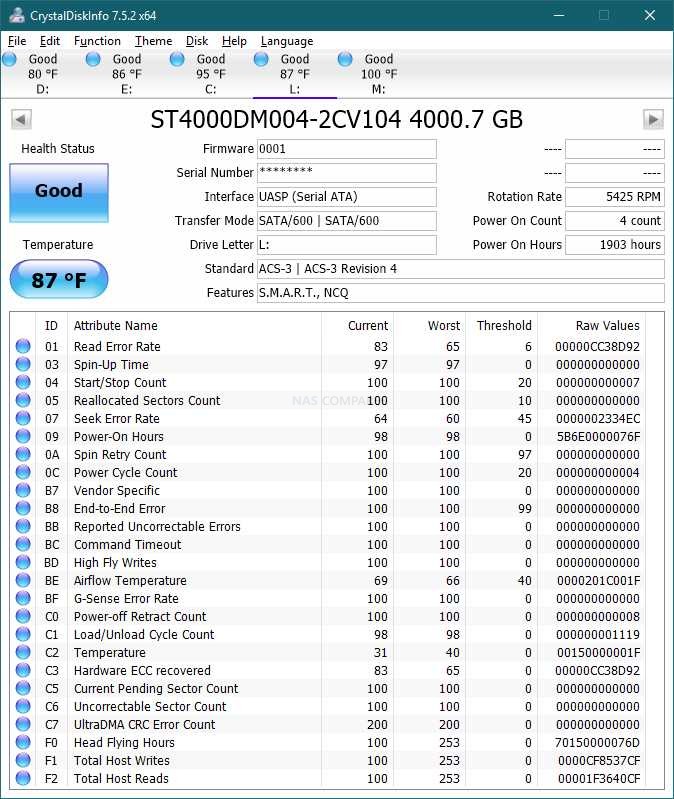
It’s important to note that depending on your system, the directory paths and identifiers for your drives will vary significantly. So, even if 100 users all had the same hard drive model, if they deployed them in different NAS brands, desktop OSs, or even external enclosures, the directory paths and device names would be different. Keep that in mind.
Are only Seagate EXOS Hard Drives Affected?
The Exos series drives appear to be taking the brunt of the reporting here. Realistically, if this flood of dubiously classified new drives is true, then the Exos series is definitely not going to be the only drives impacted by this. Moreover, Seagate was not the only hard drive manufacturer that was pumping out large-capacity hard drives at 12TB, 14TB, 16TB, and 18TB during the peak of this particular crypto-mining industry change! I think it is only now, thanks to the correlation of reports by Heise, that any kind of through-line has been found that specifically targets one hard drive brand or model series. At best, it really comes down to the bad actors who are modifying the firmware on these drives having the financial incentive to do so on a larger scale on a different hard drive series that they happen to have their hands on. The modification process of the onboard firmware and SMART data on Seagate drives is largely identical to that of the process on WD or Toshiba hard drives, and therefore, it really once again comes down to a question of correlating reports of these fake new drives all being collected together.
How Has This Happened? How Did Used Hard Drives Enter the Supply Chain?
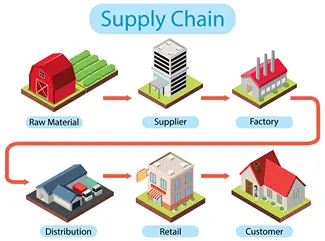
You might not know, but when you purchase a hard drive from your local retailer, that retailer almost certainly does not directly receive their stock of hard drives from the hard drive manufacturer in question. Ordinarily, hard drives, like a lot of electrical components, have a pre-established supply chain that retailers and e-commerce websites have to follow when selling their goods. With the exception of OEM companies who can buy from further up the chain and cloud/data centers like AWS and Google who can even buy right from the top, there are technically four layers in the supply chain of hard drives.
- The first part of the supply chain is the hard drive manufacturer itself, in this case, Seagate Technology, which manufactures the hard drives at one of its production facilities in numerous locations around the world.
- The next step in the supply chain is the Regional Distribution Centers (RDCs). These are the hubs where the hard drive brand sends its manufactured goods to be distributed to numerous smaller distribution centers across different countries.
- The next step is wholesalers and resellers. Sometimes resellers can also act as direct-to-end-user sales points, but the lines can get blurry depending on the quantity or device in question. Nevertheless, the majority of electronics and consumables (including hard drives) cannot be sold directly from this point to an end user and instead need to be funnelled to the final step in the chain—retail shops.
- Which brings us to the final step in the chain—traditional retail outlets on the high street and the e-commerce websites you choose to purchase from. These are the ones you’ll be most familiar with, and unfortunately, a lot of these are the same retailers that end users impacted by these mis-sold hard drives have as their initial point of contact.
The issue is that these used hard drives, which are being falsely marketed as new, have been introduced into the supply chain somewhere between steps two and four. Seagate has not had any involvement in their reintroduction into the supply chain. Somewhere along the line, these used drives were inserted into the system, and that is what Seagate is currently investigating. The retail outlet where an affected user purchased the drive has more than likely been completely unaware that they have been selling used drives as new. In most cases, these drives would have arrived in sealed retail packaging, and the retailers would have been reluctant to open up supposedly new products for testing, as doing so would immediately devalue the product in the eyes of their consumer and business buyer base.
Therefore, it is going to take time for Seagate to find the smoking gun and pinpoint which wholesaler, reseller, or distributor allowed these used drives to re-enter the supply chain.
Is Selling Used/Refurbished Hard Drives Illegal?
The sale of used, data center-grade, refurbished, or officially recertified drives is completely legal. Although Seagate, WD, and Toshiba would probably prefer to see the used hard drive market disappear, selling used drives is not illegal.
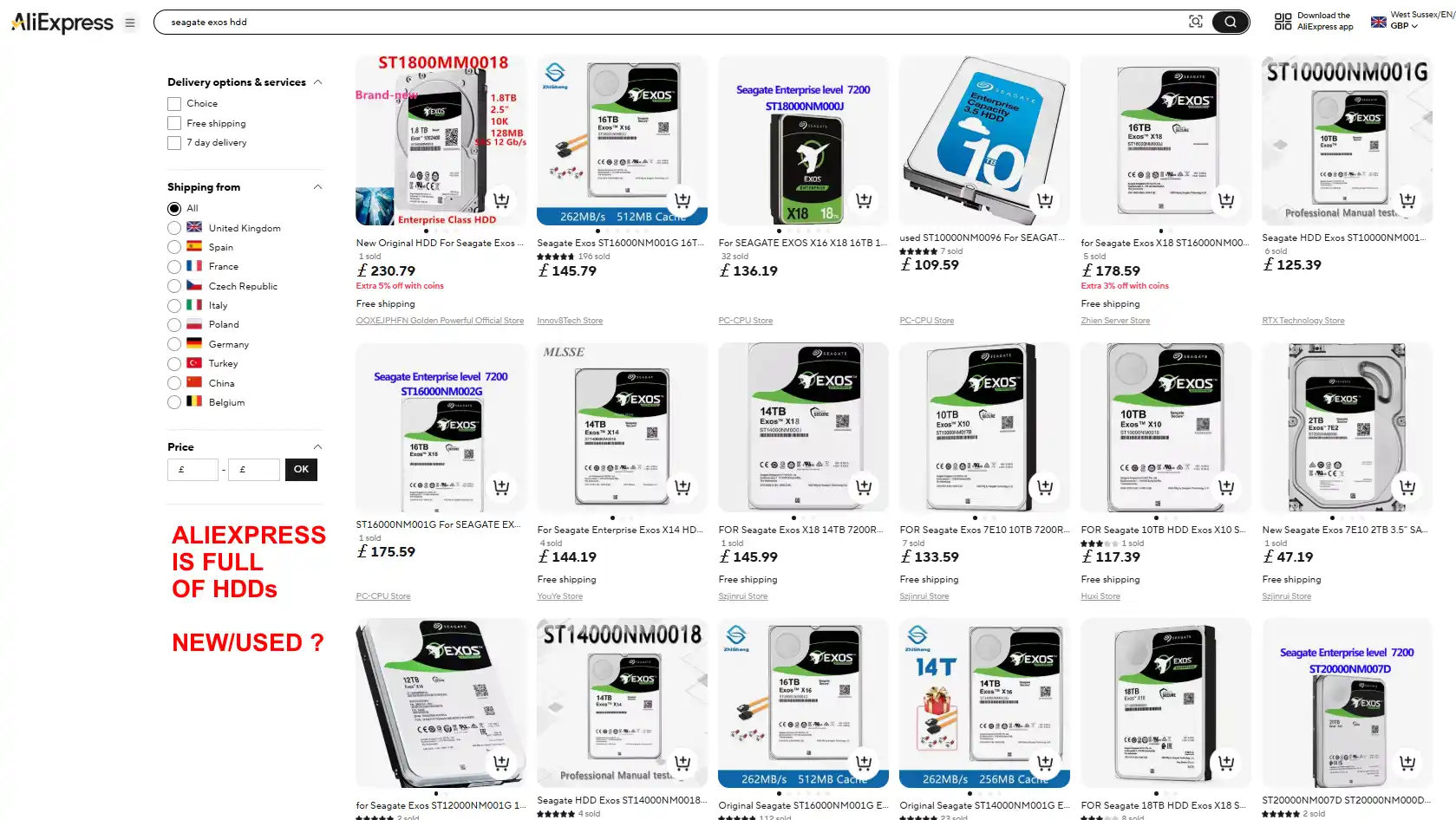
Many online retailers, including Amazon and Newegg, actively sell recertified and renewed drives—just as easily as brand-new ones.
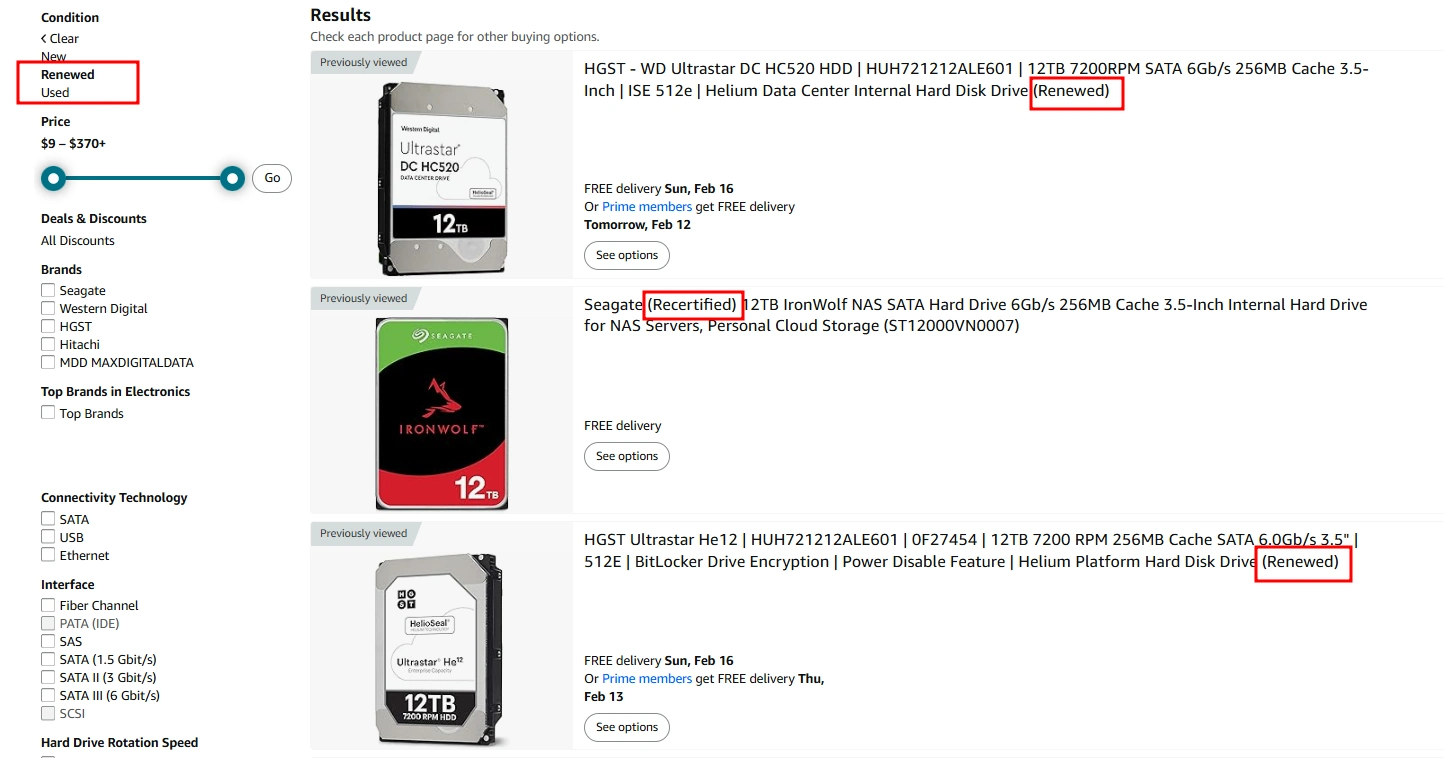
The problem here is that these were used drives that were fraudulently mis-sold as brand new—and that IS illegal. In short, this is fraud, and the people selling these drives could be pursued for damages if customers lose data due to these drives failing far sooner than expected. That’s why any drive that isn’t new is required to be labeled as recertified, refurbished, or renewed. This ensures clarity for the buyer when making a purchasing decision.
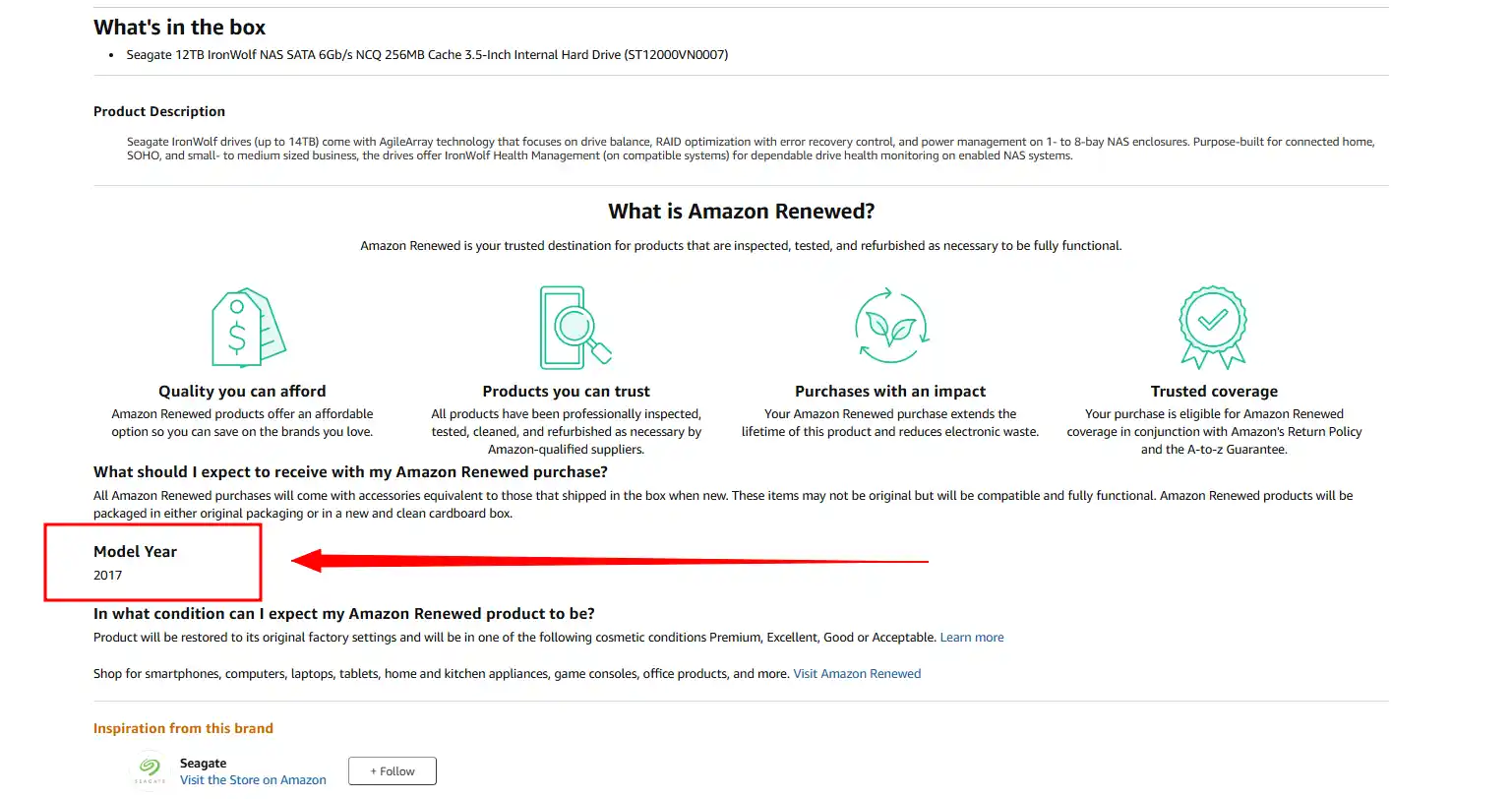
That said, some sellers intentionally make it hard to determine if a drive is refurbished. For example, a Seagate IronWolf 12TB hard drive sold on Amazon’s “previously owned” listings might clearly state that it’s used—but it won’t mention that it was originally manufactured in 2017, meaning it could be 8 years old and already have tens of thousands of hours of prior use. It wouldn’t be so bad if the manufacturing date was displayed at the top of the listing, but instead, it’s buried deep in the product details. Bottom line: Selling used drives is not illegal. Selling used drives under the guise of being brand new is fraud—and highly illegal.
Is This Seagate’s Fault?
In all honesty, one could argue that Seagate is responsible for selling large volumes of high-capacity, data center-class hard drives to the original cryptocurrency farmers. However, this would be no different than selling the drives to any regular SMB, just a question of large-scale volume. Seagate is not responsible or in any way officially authorizing the reselling of its hard drives under the classification of new storage media. Additionally, the official partners that Seagate chooses to sell its goods through have almost certainly sold these drives with as much authentication between them and the distributors/resellers as possible. It could be argued that Seagate should personally step in at the supply chain level further down the chain to periodically check the health and condition of drives—much like a hard drive secret shopper—but that’s really about it. Right now, as long as Seagate commits to investigating how this occurred and acts upon what they find to ensure that mis-sold drives don’t enter the supply chain again, that’s about as far as I think this can go in terms of blaming Seagate. Realistically, we can’t lose sight of the fact that it is the fault of the bad actors who modified these hard drives in an effort to recover the original money spent on them before Chia farming collapsed. Wherever the entry point was that allowed these drives to re-enter the supply chain, that is what needs to be identified and stopped.
What Should I Do if I Believe my HDD was Missold?
If you believe that the hard drive in your NAS, server, or storage system was mis-sold to you as a brand-new drive when in fact it was heavily used, you need to contact your point of sale immediately. Tools such as Seagate’s own warranty checker allow you to enter the serial number of your hard drive into their database checker. Regardless of whether your hard drive is still under warranty, it will still highlight whether this is an official drive or not. Additionally, if you purchased a single drive that was sold as new, but upon entering the details into the warranty checker on Seagate’s website shows that this drive was part of a larger batch, this would imply that the drive you purchased was originally included in a larger server system previously—not unlike how a food or drink product is labeled as part of a multipack and not for individual resale. If a single drive that you purchased as brand-new is listed as originally part of a multi-drive system, it is highly recommended that you contact your retailer and/or raise this with Seagate directly for further investigation.
📧 SUBSCRIBE TO OUR NEWSLETTER 🔔🔒 Join Inner Circle
Get an alert every time something gets added to this specific article!
This description contains links to Amazon. These links will take you to some of the products mentioned in today's content. As an Amazon Associate, I earn from qualifying purchases. Visit the NASCompares Deal Finder to find the best place to buy this device in your region, based on Service, Support and Reputation - Just Search for your NAS Drive in the Box Below
Need Advice on Data Storage from an Expert?
Finally, for free advice about your setup, just leave a message in the comments below here at NASCompares.com and we will get back to you. Need Help?
Where possible (and where appropriate) please provide as much information about your requirements, as then I can arrange the best answer and solution to your needs. Do not worry about your e-mail address being required, it will NOT be used in a mailing list and will NOT be used in any way other than to respond to your enquiry.
Need Help?
Where possible (and where appropriate) please provide as much information about your requirements, as then I can arrange the best answer and solution to your needs. Do not worry about your e-mail address being required, it will NOT be used in a mailing list and will NOT be used in any way other than to respond to your enquiry.

|
 |
| Where to Buy a Product | |||
|
|
    
|

|
VISIT RETAILER ➤ |
 |
    
|

|
VISIT RETAILER ➤ |
 |
    
|

|
VISIT RETAILER ➤ |
 |
    
|

|
VISIT RETAILER ➤ |
We use affiliate links on the blog allowing NAScompares information and advice service to be free of charge to you. Anything you purchase on the day you click on our links will generate a small commission which is used to run the website. Here is a link for Amazon and B&H. You can also get me a ☕ Ko-fi or old school Paypal. Thanks! To find out more about how to support this advice service check HERE
Beelink ME Pro NAS Revealed
Best SOLID STORAGE NAS of 2025
Should You Worry About the NanoKVM Hidden Microphone?
Best Cheap NAS of 2025
Minisforum MS-02 Ultra - WHO IS THIS FOR??? (The First 48HRs)
Why People Use TrueNAS, UnRAID and Proxmox to Turnkey NAS (Synology, QNAP, etc)
Access content via Patreon or KO-FI
Discover more from NAS Compares
Subscribe to get the latest posts sent to your email.


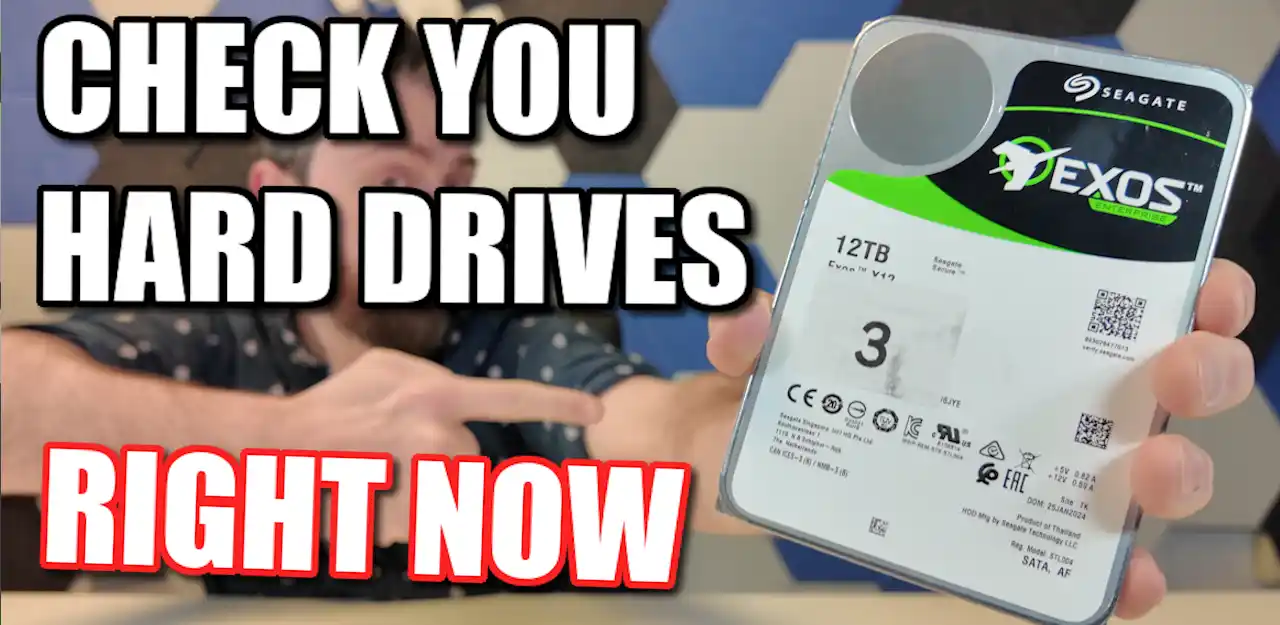



Where do you see the FARM information on the setinel pro software?
REPLY ON YOUTUBE
I asked ChatGPT to analyze my farm logs of my newly bought Ironwolf Pro 16TB and it says the drive is in great condition without any issues with reallocated sectors or whatnot. But the drive itself is indeed used for 15,577 hours (1.77 years of usage).
13.9 TB written
53.9 TB read
It says it’s normal for NAS usage and didn’t handle extremely heavy data workloads. Well, at least I got it authentic used condition and not from like Seagate Barracuda or something. New condition from retailer costs double the price so paying $260 USD is really a steal i might say.
REPLY ON YOUTUBE
Simply check the FARM log!
REPLY ON YOUTUBE
Last week I got one Ironwolf 12TB from an independent seller in Brazil. Before I opened the antistatic package I checked Seagate’s official site using the QR Code on it. It returned as an Exos X18 12TB model, which means that: 1) the HD is counterfeited or 2) it is refurbished as an Ironwolf one. Now I’ll have to return it and buy another one.
REPLY ON YOUTUBE
Just bought a Seagate barracuda 8tb sold by amazon (amazon not a marketplace seller).All looks good cosmetically. S/N looks good and shows warranty to Sept 16th 2027. However, when entering the S/N on Seagate’s website model number show is ST8000 MZ04, the model number on the drive’s label ends M004. Are those interchangeable or is that a red flag? Thank you!!
REPLY ON YOUTUBE
I believe I have a fake Ironwolf (Seagate verify won’t give me results, although the warranty page recognizes the serial) but FARM data is consistent with SMART data (at least power on hours). Could this disk actually not be a fake?
REPLY ON YOUTUBE
Just got my IronWolf 12TB drive, sealed and sold as brand new. SMART gave 0 hours, while FARM has 48529 power ON hours. Manufastured date on the label is “10DEC2024”. I bought only one, the only good thing in all of this.
REPLY ON YOUTUBE
Where would you recommend to purchase new HDD from a reputable trusted retailer ???????
REPLY ON YOUTUBE
Damn, scary, my ugreen 6800 pro is in the process of creating a pool with 6x 24tb drives and I didn’t test them first, it is doing a full “S.M.A.R.T” test while doing the raid 5, whatever that is, and hopefully I can understand it and figure out if these drivers were recycled or used… imaging paying full price for that you think are new drives and getting taken.
REPLY ON YOUTUBE
Well i just bought some “NEW” 14TB drives off lazada.. SMART returned 0 hours. smartctl reported 22,462 hours. jesus…. I had not confirmed the shipment. Sigh. checked the second drive, has 37282 hours.. What a let down man.. Thanks @nascompares
REPLY ON YOUTUBE
Is it safer to buy an external drive and then shuck it? Or are those also affected?
REPLY ON YOUTUBE
Hmm, surprised I missed this vid when it came out. I was in the market for drives several months ago and made several comments on other videos that Newegg was full at the time of Exos X16 16tb’s selling as new for obviously used prices. I’m running two, I have no problem with used drives, but the misrepresentation is crap. They still show up on Newegg all the time and it makes me hesitant to buy anything from Newegg as they quite obviously hold their sellers to very little account.
REPLY ON YOUTUBE
My SMART tool says it has 0 power on hours. However the Head Flight Hours show as a crazy number 157776053115 is this a new hard drive or not? Sorry I’m a total noob.
REPLY ON YOUTUBE
Haha NAS should have things built in .. check as soon as it goes in.. vomit out if used.. 😛
REPLY ON YOUTUBE
I just purchased 4 “new” Iron wolf Pro Drives from Amazon and all are DOM 28 Dec 2021 but have 4 different warranty dates! Going to send back as a 1.5 yr warranty on what I imagine must be a used drive is not ideal!
REPLY ON YOUTUBE
*Trump’s Diplomacy*
JD: “My Lord, I need to report to you these slightly not perfect news:
We have tried:
*Tariff diplomacy …….failed
*You have no card diplomacy…..failed
*You didn’t say thank you diplomacy…..failed
*Land for peace diplomacy ……failed
*We even tried Dogsled diplomacy.
Alas it also failed!
Trump : “Don’t worry my slime, we still have Nuclear diplomacy”
JD : “But it’s going to destroy Marred Lego and all of us too”
Trump: “No, Elon is going to bring me and my trusted slimes to Mars”
JD: “Will you bring me along?”
Trump: “No, I need you to supervise
RFK in his efforts to decontaminate the earth from radioactive fallout, you know in case there is no golf course on Mars”
REPLY ON YOUTUBE
Have bought an Seagate IronWolf 12TB ST12000VN0008-2YS101 which looks like, it’s fake. All time, when i stop my server (poweroff) and power on again. the HD is resetting his power-on-hours. on FARM values i found “Logical Sectors Read” and “Logical Sectors Written” which are very high number. (Logical Sectors Written: 33887478665 & Logical Sectors Read: 81134148138). These values are 4 times higher than my other 5 years of ironwolf HD. It’s a pain…
REPLY ON YOUTUBE
I bought 4 10TB Seagate EXOS (Helium Filled) drives off Amazon. DOM are all 2016 and there are no tell-tale nicks or scratches on the drives. Everything in the S.M.A.R.T table eludes to them being new except for “starts” which have numbers in the dozens. There are warranty “stickers” covering the serial number on the label which are VERY unremovable. I tried and they will not come off even with various checmicals. The serial number sticker on the end with the bar code is there, looks genuine and matches the electronic serial number. I went to the Seagate warranty registration website and successfully registered all 4 drives. There were no errors and so far no feedback from Seagate on their provenance. I have since bought one more10TB drive from Amazon also sold as “new”. That drive also has no physical nicks or scratches and the serial number on the label matches the electronic serial number and the sticker on the end. All 5 were bought from the Seagate store on Amazon. That “5th” drive also has 20 “starts and the rest of the S.M.A.R.T data eluded to the drive being new. Given the avaliable information, I’m not surprised if these drives are “used”, so far they have passed all the stability tests I have thrown at them so I’m not unhappy. However having said this. Had I seen from the seller thery were “Recertified”, or “Renewed”, I probably would not have bought them. This “Business model” of Seagate selling “refurb” drives as “new” is suspicious at best and possibly illegal (Fraud?) at worst. If this is underhanded they got caught, if it’s a “mistake” they should change their marketing strategy. Obviously they didn’t learn from WD they can’t get away with hiding things from people smarter than they are.
REPLY ON YOUTUBE
Just got 4 14TB Exos X18s. Mine all had a DOM from Dec of 2024 and the Warranty reported by Seagate was 5 years sans <2 weeks (i.e. warranty is good into March of 2030 on all of them). Forgot to check the farm tables before I kicked off the burn-in test, and I will still verify with that as well, but I'm pretty confidant based on the DOM and warranty reported by Seagate I'm probably not going to have this problem.
Still thanks for highlighting this so I knew to look for it. Better to know and verify it then roll the dice and maybe have a big problem later that I could have avoided with a tiny bit of effort now.
REPLY ON YOUTUBE
Thanks for the great info…
REPLY ON YOUTUBE
oh. fyi. 20TB Ironwolf Pro. 0 Spindle Power on Hours 0, but ogical Sectors Written: 39063666018. Right. FFS. This reeks like a scam pulled off by La Cosa Nostra or similar organization.
Power on Hours: 130
Spindle Power on Hours: 0
Head Flight Hours: 0
Head Load Events: 3
Power Cycle Count: 49
Hardware Reset Count: 0
Spin-up Time: 0 ms
Time to ready of the last power cycle: 22662 ms
Time drive is held in staggered spin: 0 ms
Model Number: ST20000NT001-3MB101
Drive Recording Type: CMR
Max Number of Available Sectors for Reassignment: 18204
Assembly Date (YYWW): 4233
Depopulation Head Mask: 0
FARM Log Page 2: Workload Statistics
Total Number of Read Commands: 307555223
Total Number of Write Commands: 164280
Total Number of Random Read Commands: 1009463
Total Number of Random Write Commands: 164280
Total Number Of Other Commands: 1584464
Logical Sectors Written: 39063666018
REPLY ON YOUTUBE
I just purchased x4 16TB Exos drives from Robert Electronics last week. Farm data says they all have ~30,000h use and likely came from the same system – I was initially concerned – however it appears they haven’t had an awful lot of data written to them and they all seem in good health despite the runtime, with very few power cycles and spindle/head flight hours.
I bought these knowing they were used and I’m willing to take the risk with it being £10/TB. The data I actually care about gets backed up off-site anyway.
HOWEVER, if these were sold as “new” I would certainly have an issue.
Thanks for bringing this to our attention, I’m glad I checked either way and hope those affected get some kind of reparation.
REPLY ON YOUTUBE
Thanks for sharing this content, checked my new ones 2x 20tb Exos, looks all is fine ????
Greetings from Brazil
REPLY ON YOUTUBE
Just purchased a “brand new” 20TB Ironwolf Pro from Amazon. SMART shows nothing special, ran the FARM tests and I got this:
Power on Hours: 29300
Spindle Power on Hours: 29275
Head Flight Hours: 29271
Head Load Events: 3403
Power Cycle Count: 2146
Hardware Reset Count: 5928
So I’ll be shipping it back to Amazon for a refund. It is really strange that Seagate doesn’t have an official authorized store on Amazon and we have to buy these from some random, sketchy, vendor.
Thank you for providing this information for us!!
I bought 9x EXOS 16TB drives in September sold as new/sealed and everything looked great when I got them. Had a couple of them start failing in Jan so got them replaced by RMA (direct through the seller). I’ve been testing these drives now before I reintroduce my data and have been seeing various errors. Thought it might be something in my system like the HBA card but then found out about this scam. Checked all of the drives FARM data and lo and behold the 7 original ones have 25000+ hours on them and the RMA replacements have 12000+ hours on them (probably so less likely to fail straightaway). So I’m going to contact them and request a complete refund. Sadly it’s past the 120 day time limit for a credit card chargeback so not sure how this is going play out.
REPLY ON YOUTUBE
Seagate drives are absolute crap. All of them. If you want quality you get Western Digital.
REPLY ON YOUTUBE
I’ve been trying to work out what drives to replace my ten year old WD Red NAS ones bought in late 2014 and early 2015, which recently a pool crashed due to me stupidly upgrading in 2024 to DSM 7.1 (I’d been on 5.2 for ten years with no issues prior to this). The WD warranty scam of getting DSM to mess your drives up after 3 years, to make you buy new ones made me not want to touch WD again. So I am now faced with the fake drive scam debacle, and wondering what the heck to buy to put in my old DS415+ NAS. I’m also wondering if I can put my old crashed storage pool drive back in, to try and telnet in and retrieve my data. Flippin’ ‘eck! As if these times were not hard enough! A sea of sharks out there!
REPLY ON YOUTUBE
Another purchase of 3x16TB. First arrived today, and… Manufactured in Jun 2022 with the warranty cover only in China.
Seagate advised to send it back and get one with UK warranty. Tomorrow I’m expecting remaining two 16tbs but I think situation is going to be the same. I already ordered 16TB Toshiba and see how this going to look.
Any advice for testing Toshiba’s disks?
I spoke with Amazon’s customer’s support and as usual, please send it back to us, don’t worry, that’s what they said.
REPLY ON YOUTUBE
I bought 5 x 16TB IronWolf Pros for my 1522Plus NAS last year, supplied and shipped from Amazon. All the serial numbers and warranty dates check out on the Seagate site (as up to 3 months longer), and they’ve been through multiple data-scrub cycles now.
REPLY ON YOUTUBE
In my case 5x Ironwolf Pro 16TB ST16000NE000 -> 4 year old drives sold as new…
REPLY ON YOUTUBE
I’m thinking of picking up some drives from server part deal but a little worried about bad drive i never buy used. Do you have any experience buy drives from server parts deal?
REPLY ON YOUTUBE
I bought “new” 16tb ironwolf pro from China to UK via ebay. Smart show 0 hours, farm shows 13000. Started return for a full refund. This is big scam.
REPLY ON YOUTUBE
Does anyone know if Robert electronics has been affected by this?
REPLY ON YOUTUBE
*THANKS FOR THE VIDEO!*
REPLY ON YOUTUBE
Excellent video, valuable information, thank you.
REPLY ON YOUTUBE
I purchased 16TB drives which were sold as refurbished and had around 30,000 hrs of ontime. They are supposedly refurbished (checked) by the manufacturer. So I wasn’t misled, but should I worry about their ages??? What would be the life expectancy of NAS drives? Mine are WD Red 16 TB units.
REPLY ON YOUTUBE
okay, so dont buy asus, msi or seagate. got it.
REPLY ON YOUTUBE
I found one in the us I just got it off eBay it has a face serial number and 0 power on time
REPLY ON YOUTUBE
Thanks for explaining this.
Please can you explain how I test for example a drive in bay 3 when the DAS is mounted at drive:R. Thanks.
I have installed smartmontools to a win10 pc
I think I have 2 pre-used drives in a 4 bay DAS TR-004. The seagate warranty check states they are out of warranty. I bought them 3 months ago.
REPLY ON YOUTUBE
Went through Seagate’s list of authorized sellers, bought brand new HDD from laptopsdirect via that list, Seagate Exos 16TB arrived dented and scratched with a 2021 manufacture date!
REPLY ON YOUTUBE
Moody! Haven’t heard that in a while!
REPLY ON YOUTUBE
Lazada 12TB ironwolf pro from China at $150 as pc hdd, 3 months. Sounding quiet n fast 265MBps. Verified at seagate site 2 yrs 7 months remaining warranty. Hdd body and connecting pins are shinny with no scratches. Wd ex2 2x4tb red cmr clrocked 50 hrs, terramaster with toshiba 2x8tb clocked 5 months. Less (3tb contents) is more (life freedom). Cheers
REPLY ON YOUTUBE
I have a affected drive to (exos) thanks for the heads up.
REPLY ON YOUTUBE
I have a affected drive to (exos) thanks for the heads up.
REPLY ON YOUTUBE
It is just so sweeeet… “somewhere in the supply chain”… It is Seagate’s supply chain, not mine or yours. And it is Seagate’s responsibility to fix it. At their own expense of course.
REPLY ON YOUTUBE
Damnit. Both 16TB Ironwolf drives from Amazon last month both have over a year of power on hours in FARM data. Only silver lining is that spindle power hours is under 500 each.
REPLY ON YOUTUBE
Hold up – 13:40 – don’t run it as Administrator. There’s nothing PuTTY needs to do that requires administrative access to your Windows computer – so there’s absolutely no need to run as Administrator.
This applies to any program – unless you *know for certain* that the program will be making administrative changes to your computer, don’t run it as Administrator. And if a program that shouldn’t need Administrator starts asking for those permissions, it might be time to confirm that it really is the program you think it should be.
REPLY ON YOUTUBE
Seagate itself is kind of doing the same, but legally. I found the Seagate blog text on the Seagate page. Numerous companies legitimately refurbish and resell drives as used products, including Seagate. Seagate is committed to environmental sustainability and supports a legitimate second-hand market through our circularity initiatives. We recertify drives that still have useful life, clearly labeling them as “recertified” at the bottom of a green-bordered, white label. Additionally, both the word “recertified” and the unique serial number are etched into the drive to match “recertified” and serial number as they’re printed on the label. These drives come with a six-month limited warranty, providing customers with a reliable option for purchasing second-hand drives.
REPLY ON YOUTUBE
Great information, thanks for this and the follow-on video!
REPLY ON YOUTUBE
Does Seagate refurbish hard drives? I have one 4 TB Seagate IronWolf Pro hard drive. The “Recertified Product” marking is on the main label and near the connector. According to Smart Data’s usage hour counter, the drive was brand new. A product label comparison cannot be made because there is no image on the Seagate website.
REPLY ON YOUTUBE
I bought an iron wolf pro 16tb and 18tb but they came in a sealed box. Am i safe? I bought them Best Buy in Canada.
REPLY ON YOUTUBE
My dear friend, heise is pronounced “haize”. ????
REPLY ON YOUTUBE
My drives are affected. They have about 1.3 years of usage on top of the usage I have put on them. This makes me suspect the seller knew because they came with a 3year warranty and not the standard 5 year Seagate offers locally for these drives.
REPLY ON YOUTUBE
Shopping on amazon has become a similar experience as shopping on wish, since years though. For my short experience with them even support is useless
REPLY ON YOUTUBE
ffs…. I just want 3 new 14TB drives for my new NAS… why does all this shit ha to happen now hhhhhhh ????
Like how long is this scam even going to last until we get legit new drives again…
REPLY ON YOUTUBE
My Seagate drives had serial numbers starting with the word RANDOM is Seatools the one on the label wasn’t recognised by Seagate support. After I returned the drive I noticed dents in the photo I took of the drive.
Is there any way to tell whether Toshiba’s or WDs are used? Any test to validate them?
REPLY ON YOUTUBE
… what about SMART detail, if FW modified, then it would imply a new drive data… going to be checking my HDD’s… as i said have 4 drives from China/Ali… thats failed under 2000 hours.
REPLY ON YOUTUBE
i guess im glad i bought my drives back when they were very overpriced a good 3+ years ago
REPLY ON YOUTUBE
I bought two 16tb Seagate IronWolf Pro’s off ebay recently. Advertised as new. The SMART data shows them as having very little power on time. The FARM data shows one has ~3.25 years and the other ~1.23 years of power on time. Thanks for posting these steps, I have a Synology and had to install Entware to download a newer version of smartmontools to get the smartctl -l farm command to work.
REPLY ON YOUTUBE
I bought 8 red seagate drives from my local computer store. They came in a moulded styrofoam block with a sealed taped around the join. They are fine. I carefully did a visual check, and used the utility in TrueNAS Scale to check them. How are new drives packaged? Ask the maker.
REPLY ON YOUTUBE
Dec 2024 Bought new NAS and 3 IronWolfPro 16TB. Canada. All 3 drives are bad. 2 from Amazon(put in those SN into Seagate warranty site it said to contact seller) and 1 from Newegg (Seagate warranty site said only 4 years warranty but it should be 5). Just emailed each seller. Any suggestions what is reasonable to request? They are in a working NAS and can’t just be removed as RAID can only rebuild one at a time.
REPLY ON YOUTUBE
Dude! I literally set up my very first NAS with 2 IronWolf HDDs from Currys… 1 had weird issues and the started acting up 2 weeks in… thank god I was able to RMA them! I was thinking they must’ve been fake because the test results were weird 🙁
REPLY ON YOUTUBE
is server part deal affected by these shenanigans? I am hesitant to buy now.
REPLY ON YOUTUBE
I prefer WD’s ENGRAVED serial number on the HDD….
Sticker too easy to modify…
REPLY ON YOUTUBE
Right. I need to work out how to do this in my Unraid box.
REPLY ON YOUTUBE
sahh ahhh connections
REPLY ON YOUTUBE
I have purchased 3x24TB ironwolf pro off neweggs Canada at black Friday discount 550$ each in November 2024. During the same period WD Red Pro 24TB were 800$
I did scan the code with my cell and got the Seagate webpage authenticating the legit drive.
Still I don’t recall if there were physical scratches on the casing and I don’t feel like removing them from my old Pc case it is a pain.
I was under the impression 24TB drives were very récent, few months at most.
Do you think they would refurbish such recent drives?
Those 24TB drives if they were used could not be older then few month right?
REPLY ON YOUTUBE
This is seriously valuable information for consumers. Forewarned is forearmed, as they say.
REPLY ON YOUTUBE
I bought a factory-refurbished Seagate Ironwolf PRO 4TB drive in September 2024 for €78.99 from a reliable online store. The drive has worked so far. I’m not sure if it’s a fake or not.
REPLY ON YOUTUBE
Reminder folks: report these rogue sellers to trading standards so they might actually face consequences!
REPLY ON YOUTUBE
Bought ‘new’ Ironwolf and Exos drives from two different Amazon marketplace sellers last week and both turned out to be years old. Amazon removed my reviews and the reviews of the sellers got flagged as a ‘shipment problem’. Amazon DGAF.
REPLY ON YOUTUBE
Glad I was smart and bought toshiba MG10 drives .
REPLY ON YOUTUBE
I can confirm that Ironwolf Pro 16 TB are affected. I have 4 of those and more than a dozen affected 16TB Exos. Even Exos with serial number stickers and no outward buffs, nicks, scratches.My 20 TB drives do not seem to be affected, though. Also, the Skyhawk AI 20 TB did not show any discrepancy.
one simple way to spot the issue is when you look at smartmon -farm /dev/… and look at the total lbs written. currently I would assume ANY seagate 16TB drive in DE to be a remarketed ex-mining drive.
REPLY ON YOUTUBE
I buy most of my drives from Broadband Buyer and Ebuyer (new) and all checked have been genuine matching recorded smart and farm data.
REPLY ON YOUTUBE
i’ll stick with hgst’s from serverpartdeals. sure, they don’t tend to have snazzy deals, but they have a significantly better failure rate than other sources, and will generally make ‘quick’ failures right.
(no, i’m not affiliated with them)
REPLY ON YOUTUBE
even worse is that the option of amazon renewed is now gone in europe, so even if I wanted to buy proper refurbished to save on money and take the risk there are none….so there goes my dream of consolidating all my scattered data finally in a big nas or utilising a low end or second hand pc with 4-6 drives in some raid….one day want to put all the data into one folder and do a proper big cleanup, external drives, internal drives and a bunch of old cds and dvds, aroundish 100TB, if properly cleaned up 60 or less hopefully….but by than china will mass produce flash nand and the 61,44TB U.2 drives will cost less than a big mac menu…right? RIGHT?
REPLY ON YOUTUBE
By a funny coincidence – just got a 12TB IronWolf purchased from the German (brrrr) Amazon. The label is off vertically as you describe in the video, but : no visible scuffs even under my phone magnifier, clean ports and holes, QR code works fine, warranty matches, serials match, FARM reports 0 hours. Fingers crossed it is good as I’m keeping it.
REPLY ON YOUTUBE
00:02 Yesterday I got exactly that 24 TB Ironwolf from your right. I checked it and my older 20 TB with smartctl -l farm and -l devstat, but they’re fine.
REPLY ON YOUTUBE
Easy solution: buy used.
REPLY ON YOUTUBE
Been… and I mean multiple drives (Seagate 12 TB Ironwolf and Ironwolf Pro) from AliE…. and out of 10drives I’ve got 4 that’s serious, un-useable amount of errors….
REPLY ON YOUTUBE
This sounds illegal
REPLY ON YOUTUBE
Hard Disk Sentinel can also report if the SMART data differs from FARM data.
REPLY ON YOUTUBE
Thanks for the video. Six months ago I bought a Seagate Exos 16TB X18 in the UK from Amazon from Spain and I had to return it because it didn’t work and had damaged blocks. Then I bought a Seagate Ironwolf Pro 12TB and so far everything is perfect, although the Ironwolf Pro cost 60 euros more even though it had 4TB less. Greetings and thumbs up.
REPLY ON YOUTUBE
thanks for video, didn’t know Ironwolf series were affected too. it’s not happening only in Europe but here in Middle East too. they buy old used Seagate Enterprise Capacity drives (10,12,14 TB) with thousands of power on hours then they reset the SMART data with special hardware and then they remove the top label and print new labels of EXOS and Skyhawk on them. but the base labels that contain serial numbers remain untouched and they only print new top label with the same serial number that drives had. but fortunately they don’t change product number since most of them are STxxxxxNM0127. also their QR codes are fake. also when you check them with Seagate warranty website, it doesn’t show the exact drive model and picture, which it should.
REPLY ON YOUTUBE
The fake blues!!! ????
REPLY ON YOUTUBE
Oh dear, I have been reading alot about this EXOS HDD fraud.
I purchased 9 EXOS X18 16TB drives brand new a couple of months ago from Scan. Figured I’d be fine as I’ve used Scan for many years with no problem.
They all arrived in legit OEM packaging in sealed anti-static bags so you’d never know.
Anyway this article prompted me to check and be sure and it looks like I’m a victim of this! Doing a deep dive using FARM, I have discovered all 9 have over 20000 power on hours (almost 3 years!). Normal SMART attributes have been reset but this shows the true picture.
I’ve emailed Scan, let’s see how they make it right.
C:\_Portable\SmartMonTools_Portable\bin>smartctl.exe -l farm /dev/sda
smartctl 7.4 2023-08-01 r5530 [x86_64-w64-mingw32-w11-b22631] (sf-7.4-1)
Copyright (C) 2002-23, Bruce Allen, Christian Franke, www.smartmontools.org
Seagate Field Access Reliability Metrics log (FARM) (GP Log 0xa6)
FARM Log Page 0: Log Header
FARM Log Version: 4.29
Pages Supported: 6
Log Size: 98304
Page Size: 16384
Heads Supported: 24
Number of Copies: 0
Reason for Frame Capture: 0
FARM Log Page 1: Drive Information
Serial Number: ********
World Wide Name: 0x5000c500e321e077
Device Interface: SATA
Device Capacity in Sectors: 31251759104
Physical Sector Size: 4096
Logical Sector Size: 512
Device Buffer Size: 268435456
Number of Heads: 17
Device Form Factor: 3.5 inches
Rotation Rate: 7200 rpm
Firmware Rev: SN06
ATA Security State (ID Word 128): 0x01629
ATA Features Supported (ID Word 78): 0x016cc
ATA Features Enabled (ID Word 79): 0x0000000000000040
Power on Hours: 21171
Spindle Power on Hours: 682
Head Flight Hours: 486
Head Load Events: 1444
Power Cycle Count: 126
Hardware Reset Count: 77
Spin-up Time: 11 ms
Time to ready of the last power cycle: 21748 ms
Time drive is held in staggered spin: 0 ms
Model Number: ST16000NM000J-2TW103
Drive Recording Type: CMR
Max Number of Available Sectors for Reassignment: 16384
Assembly Date (YYWW): 1254
Depopulation Head Mask: 0
Don’t people by direct?
REPLY ON YOUTUBE
Two ironwolf pro 16TB from amazon two weeks ago. Serial numbers do not match and cannot be verified, smart were reset. Disks were full of binary. Immediately sent back for a refund.
REPLY ON YOUTUBE
Well, I’ve checked mine. Refurbished ones, and…. No, they’re not new now.
I’ve thought it could be both ways. ????????
REPLY ON YOUTUBE
Is it only Seagate, or is Toshiba affected as well?
REPLY ON YOUTUBE
Damit i just bought iron wolf drives during black Friday. I haven’t even take them out of the box. Now i have check them.
REPLY ON YOUTUBE
Does seagate have any plans in place to address this?
REPLY ON YOUTUBE
This is a consequence of the death of physical stores. If I walked into Best Buy, Fry’s, or CompUSA and picked up a shrink wrapped box, I could be pretty sure that it was a new product. Ordering online requires a certain level of trust that scammers are abusing.
REPLY ON YOUTUBE
My EXOS 16TB has no scuff mark whatsoever and but 20k hours power on and the label with fake manufacture date. Retailer only solution was a return and refund, no replacements, the drives are already in use in an array, I do have a single point of failure backup as an external drive but sending them back was just too inconvenient given the state of the market atm. Had to use europeans laws and threaten to sue to get another solution like partial refund which would let me buy a spare in case any of those used drives died early.
REPLY ON YOUTUBE
Because Western Digital is crap.
REPLY ON YOUTUBE
This is extremely common in Indonesia, and as been for at least all the 11 years I’m living in Indonesia now. Refurbished/fake drives even come with full warranty. I just buy the refurbished drives with low hours at a reduced price. Yes, sometimes 1 of my drives develops issues, yet in terms of value-for-money I am still fine. Btw, you can buy the controllers (print boards) for less than 1 euro in Jakarta, offered by at least dozens of computer parts shops.
REPLY ON YOUTUBE
This is why I only buy refurbished HDDs… Well and my bank account… Okay it’s only because of my bank account ????????????
REPLY ON YOUTUBE
smartctl -l farm /dev/sdX does not work on a Synology NAS. Is there any way that I can check it remotely without asking the owner to put his drives into a Windows machine?
REPLY ON YOUTUBE
are the listed as new ones sold and shipped by amazon safer ?
I never buy from resellers on amazon
REPLY ON YOUTUBE
i am pissed. I just bought 8 ironwolfs, after watching this video I check them an all 8 are used and are different devices.
REPLY ON YOUTUBE
An exodrive bought recently from a known UK retailer showed +20k power on hours…
REPLY ON YOUTUBE
Scammers gonna scam. I wonder why it’s just Seagate and not the other drive manufacturers.
REPLY ON YOUTUBE
I agree to buy one of those but for the fair price.
REPLY ON YOUTUBE
There will be more
REPLY ON YOUTUBE
Chia farmer here! Send me your drives. Also, don’t be afraid of hard drives used for Chia – the don’t get much use beyond the spin time. Certainly though if you being sold drives as new and they are used, that is fraudulent.
REPLY ON YOUTUBE
I went HGST/WD re manufacturing version of 10tb from Amazon from the US to UK mine is 2019 was sold as re manufacturing and £100 for 10tb
REPLY ON YOUTUBE
An Ironwolf Pro 4TB just arrived yesterday. DOM is last 2023 based on the label and with warranty until 2026. Upon checking the farm values, it has 55k power on hours or more than 6 years of usage. Ordered the drive direct from china and I’m from the PH
REPLY ON YOUTUBE
I ordered 6 x 12TB Ironwolf Pro drives on Amazon UK, order was split between 3 deliveres. First arrived today, I could not verify serial number on Seagate website, it was unrecognised. So I got SEATOOLS and Crystal Disk Info. Serial numbers in these tools were different, Seatools was showing this serial number starting innocently with – “RANDOM_3A88F9D44765”. While Crystal Disk Info was reporting serial identical to the one on the HDD sticker. Only then I noticed the model number was different than the one on the product page – ST12000NT001 instead of what I irdered – ST12000NE008. The drive was delivered in anti-static bag with the sticker added to it indicating this was the disk from the product page, while if you looked closely you could notice it didn’t match the label on the disk.
The only other suspicious data in SMART was “Head Flying Hours” being unrealistically high both in CDI and in Seatools, HEX in the first and DEC in the second. I didn’t have the time to run the FARM test because I had enough info at that point. I cancelled the other part delivery while I have to wait for the second to arrive before I can initiate the return. The one I recived today is being returned to Amazon by now.
REPLY ON YOUTUBE
Thanks for bringing this up. I bought a couple of EXOS X16 16TB from a major UK retailer in October 24, paid full price, just checked both of them and both showing in excess of 17000 power on hours already. I’ve emailed the seller about this as they’re definitely selling them as new.
REPLY ON YOUTUBE
My new Synology drive on my old 2-bay Synology NAS “died” last week after 2 months. I swapped bays yesterday and brought it back to life. I also have a new 5-bay Synology as my main NAS with 2 vacant bays which can use the new drive when the old NAS completely fails.
REPLY ON YOUTUBE
How long has this been happening?
Great video, thanks for keeping it simple. Of course I went away to have a look at my disk and found some conflicting data so I wonder how long this has been happening?
I purchased a new cheap drive from a Singapore supplier with a good UK web site in Jan24. I got a 8TB Ironwolf drive dated Mar23. The drive looked mint and warranty looked okay.
Smart check says
9390 Power on Hours
1057 Head flight hours
FARM say
66948 Power on hours
1060 Head flight hours
Head flight looks okay but can power on be almost 60k more (6.5 years)?!
The drive was only released Jan’18 but power on would suggest it’s been on continuously since July’17
REPLY ON YOUTUBE
Seagate = Junk!
REPLY ON YOUTUBE
I have bought several Seagate barracuda and exos drives that were Manufacture recertified. I just checked and the SMART and FARM both match no issue. I did have to use a different command structure. I have the drives in a ProMedia box via USB and I had to use the command smartctl -l /dev/pdX found the pdX line via google and it works. Still have yet to check the NAS box. Soon.
REPLY ON YOUTUBE
I purchased 7x 16 TB Seagate Ironwolf Pro from AliExpress. The first 2 came with 2-3 warranty period left when registering at Seagate. The next 3 drives came with same warranty when registering at Seagate. The seller also offers 3 year warranty based on the date sticker applied before being shipped. But the seller is purchasing from a different seller or distributor. All drives have smart data that would indicate a new drive. 1 of the last 2 drives purchased was a Demo drive with no warranty confirmed from Seagate. I use the drives with TrueNAS as a backup NAS to my 3 older Drobo FS NAS’s
REPLY ON YOUTUBE
I ordered two EXOS X16 16TB drives from Office Partner this Janurary sold as new, FARM reports both at 20k hours power on time..contacted the seller hopefully I can get conpensated. As I’m already using the drives on my NAS sending them back is going to be annoying. They has no scratches at all and looked brand news.
REPLY ON YOUTUBE
Thanks für this Video. Industrie checken my 20 TB exos with Warenströme Check. They are fine. My two 16 TB Exos though with warranty expired (I have to Check, when I bought them) seem to be accected though Running without issue. So I am unsure what to do with them.
REPLY ON YOUTUBE
Well, I just discovered my “new” drives purchased a couple of months ago in December have 11804 and 12063 Power On Hours respectively (492 and 503 days). It’s not as bad a POH as some are reporting, but still shouldn’t have been described as “new”. I’ve emailed the seller and will see what they say. Interestingly, their current product page now states that they are “like new” and are batch sourced from large machinery with the SMART reset, but that wasn’t the case when I bought them, as I’d’ve thought twice about purchasing used drives. I did referenced this video though, and thanks very much for making me aware of the issue. Now I just have to wait for their reply…
REPLY ON YOUTUBE
Thanks for the heads up, ???? and I researched my 2 “brand new” 18TB HDD from Seagate after watching your video.????
Unfortunately I was one of the unlucky customers, and it was actually quite easy to discover even though they apparently were manufactured on 12 august 2024, and with zero hours or any scratches on the casing. I registered them on Seagate and with no magic, it was clear that they were both manufactured on 12 march 2020! ☠️????
REPLY ON YOUTUBE
Bought 6 18TB Seagate Exos through an Amazon seller PRIVIX in the last year and checked the warrenty info on Seagte, 4 of them had already expired, I’m not tech savy enough to check the metadata but will check with mates if anyone wants to give it a go (the QNAP SMART info all looks good) but I reckon I’m just gonna have to swap them all out and send back to amazon. Disgusted with Seagate though they offered to fix the warrenty to the correct date from purchase if I sent the reciepts but if they are dodgy (and considering the giant red flag) I’m left with used drvies I paid full whack for.
REPLY ON YOUTUBE
Sure enough, my two “new” Seagate Enterprise 12TB drives (bought in Nov’24) got around 40 months of power on time when queried using FARM. Seller agreed to refund. Thanks from Germany!
REPLY ON YOUTUBE
Well maybe it seems that getting that extended warranty is not a bad idea I hate to say that but if people are doing this you know holy s***
As far as Amazon like renewed or anything refurbished when it comes to hard drives I always call b******* because it’s not like they’re opening the drives themselves they’re literally just plugging it in and making short turns on and doing probably just a simple disk read That’s about it you know I wouldn’t assume that they would do anything else whatever it is just say yep it turns on get it out the door
I’ve seen the drives on AliExpress and people actually have mentioned about smart data being wiped or actually just being there but with a s*** ton of hours on system
REPLY ON YOUTUBE
Thank you! Just checked my two Ironwolf 12 TB: SMART says 380h for both, FARM tells me 31’000h for one and 42’000h on the other. I will contact the seller immediately…
One of them has a mismatch between the serial number that SMART/FARM reads and what’s printed on the label!
REPLY ON YOUTUBE
Can you put a thunderbolt card in a diy pc nas build and connect it to your main pc? Or does thunderbolt nas operation only work with premades such as qnap?
REPLY ON YOUTUBE
Thanks for being up front with the news! ????
Bought 9 pcs. new Exos X18 16TB a few month ago with a 2021 DOM. Luckally the “Real” Power_On_Hours (Smartctl -a) says 0 hour matching the SMART data.
Unfortunately, there is just constant fraud in this world ????
REPLY ON YOUTUBE
Typo in thumbnail. Just FYI.
REPLY ON YOUTUBE
The last 2 Barracudas I bought failed just out of warranty. Light use.
Made me wary of Seagate.
Are we saying ALL drives from Seagate no matter where you buy them from ‘might’ be suspect and should be checked?
I usually buy mine from Scan or Ebuyer in UK.
Or is it just certain dodgy sellers?
Concerned as I’m about to buy another 3 or HDDs but was looking at WD red.
Any pointers appreciated folks!
Cheers
REPLY ON YOUTUBE
are you bri’ish?
REPLY ON YOUTUBE
Fortiuneately, even servers are moving to nvme.
REPLY ON YOUTUBE
Nothing new.
If vendors would stop the shit between OEM and Retail and just provide serial check for all of them we wouldn’t even be talking about this.
REPLY ON YOUTUBE
I had purchased 6 Seagate Ironwolf Pro 12tb drives (nt series). Three were purchased from Amazon and three from NewEgg. They were not bought from resellers but directly from Amazon and NewEgg directly. All six drives passed the Seagate validation test and showed zero power on time. More importantly, when I registered the drives, they showed the full five year warranty period.
REPLY ON YOUTUBE
checked both of my ST14000NM001G (Exos x16 14TB) Drives after the video which I bought “NEW” from amazon (Germany) couple days ago.
First drive had 10,646 PowerOnHours (1.2 years) the second drive has 29,109 POH (3.32 years) … both drive SMART values had been cleared of course and they listed zero POH
Drive 1 DOM: Dec 2020 / Drive 2 DOM: May 2021
REPLY ON YOUTUBE
????????????
REPLY ON YOUTUBE
I just buy used and then do RAIDZ2.
REPLY ON YOUTUBE
I miss Quantum SCSI drives from back in the day… For NAS use Wd red does typically have the best scores for longevity but they cost more than seagate. With market consolidation they are still the best options for nas . It will get sorted, thanks Robbie for exposing this.
REPLY ON YOUTUBE
I got 3 recertified 12tb IronWolf from Newegg, are these affected too?
REPLY ON YOUTUBE
Maybe they could just change the color on the label of the drive each year just like here in the US they have a registration sticker for your license plate that’s a different color each year.
REPLY ON YOUTUBE
Seagate tool actually crashed trying to recognise one I got….
REPLY ON YOUTUBE
The version of Smartmontools that ships with the latest version of Synology DSM doesn’t have the FARM access facility (it’s a really old version). There’s no package manager installed on DSM out of the box so updating it isn’t straight forward
REPLY ON YOUTUBE
*update* I have refined some of the commands in the description of this video, as well as adding a couple more SSH and NAS-focused ones. One issue is the character limit of the description box, so I have added these and a few others to the article linked at the top, or you can find it here https://nascompares.com/news/seagate-exos-drives-and-possibly-others-being-mis-sold-check-now/
REPLY ON YOUTUBE
Yet ANOTHER reason NOT to buy Seagate (as if the emo nature of the drives weren’t enough of a reason to avoid them already).
REPLY ON YOUTUBE
I bought 3x 16TB new in feb 2025! of these HDD… which in fact where drives from 2021… returned them to shop in Netherlands, got my money back. So be careful!! I now bought Toshiba.
REPLY ON YOUTUBE
Yes, check you hard drives — they may be dropping bits.????
REPLY ON YOUTUBE
Greeno is pretty much the biggest seller of iffy drives in South East Asia, if you picked up a drive from that seller 100% check it.
REPLY ON YOUTUBE
commands in description for putty were wrong, I had to copy from your video, also I think its worth mentioning that seagate may be the only brand offering FARM data and if it was other brands with reset SMART data you would never know, also, can you clarify, does the last command you put into putty in the video actually check FARM or is it still reading the smart data?
REPLY ON YOUTUBE
Yes, I have two of these, sold as NEW, cost me 420GBP, 2x 14TB Seagate Ironwolf Pro, came sealed, not a mark on them, FARM revealed powered on hours of 25,000, waiting to hear from Seagate, see what they say, when I bought them in July 2024 Seagate gave me 5 years warranty after I contacted them. BEWARE, Seagate had subsequently invalidated my warranty without telling me, and before I contacted them about the fraud. Started using first drive in TrueNas about 2 months ago, now have ZFS errors, tried 2nd drive, that keeps going offline. I suspect I may have to sue the reseller if Amazon or Seagate won’t help. I had no idea I had been scammed.
REPLY ON YOUTUBE
Helpful, thanks!
REPLY ON YOUTUBE
something is going on with HDDs. WD & Seagate supply stock has been sporadic since the beginning of this year.
REPLY ON YOUTUBE
No seagates, no problems here ….
REPLY ON YOUTUBE
SERIOUSLY. USING ALL CAPS IN TITLES MAKES SCANNING TITLES QUICKLY MORE DIFFICULT.
REPLY ON YOUTUBE
G’Day. In my old QNAP 4bay NAS, (4x3TB) I used to replace a ‘faulty’ drive (as reported by the NAS) whenever they appeared (only twice). I ran Windows Easus, no errors etc. I then put the old drives up for sale on eBay for AU$30 (without checking hours of use)… BUT, now I just did. Downloaded the Seagate s/w and found that the HDD I am selling now had 15000 hours of use (over a 7 year period) which in real terms is 1.7 years. (hardly a lot really IMO). I’m not trying to sell my old drives as new, but the age of the HDD is a bit of a concern IMO. Should the ‘buyer beware’ apply here, or, are they getting a good deal in your opinion?
Most HDD & SDD maker seem to use this standard figure of 1.5 million hours as their MTBF (Mean Time Between Failures). I calculated this to be 62,500 days, or 171 YEARS. I may live a long life, but not THAT long ! Given that 171 year time frame, should buyers really be worried ?
Also, is there a Western Digital version of the Seagate tools ? (I could not see one on their site)
REPLY ON YOUTUBE
I’ve returned several Exos and even a couple Toshiba drives purchased on Amazon over the last few years because they were used drives sold as new.
REPLY ON YOUTUBE
Thank you ????
REPLY ON YOUTUBE
Checked out my new Iron Wolf when they arrived the other week. Seems ok. But still a bad show.
REPLY ON YOUTUBE
I bought an seagate Exos 12TB 0127 just a few hours ago before this video. checked it with HD Sentinel Pro and yes SMART data was reset to 0 and drive had more than 1400 days of power on, according to FARM data. it was in vacuum plastic but there were small signs of a used drive that i didn’t noticed.
REPLY ON YOUTUBE
While watching this vid, I checked two 10TB Seagate Exos that I assumed were brand new. They each had over 6.1 YEARS of power on hours on them from the FARM report. I have contacted the seller.
REPLY ON YOUTUBE
smartmon tools are not very accurate because there is so little standardization between manufacturers. You’re better off using Seagate’s tools for Seagate drives and WD’s tools for Western Digital drives.
REPLY ON YOUTUBE
oh. so dirty. dirty business.
REPLY ON YOUTUBE
This is incredibly handy to know!! I am looking at getting a NAS of my own and have persuaded my eldest son that he would benefit from doing the same (he’s more enthusiastic than I am I think!), so we were due to be in the market for drives for these at some point in the next month or two. Clearly we need to be ultra careful about how we source the drives we plan to use to get started!
As for Chia “hopefully” rebounding, sir, go to Trading View and pull up the monthly chart. I suspect that it is terminally ill. I hate to be passing on a more negative message but you’re more likely to see it at $7 in the next few weeks or so than you are to see it at $27. Good luck to you for it for the remainder of the bull run. FWIW I discovered your channel recently and I’m really enjoying your NAS related content, I’m just not so sure about your dubious tastes in crypto lol
REPLY ON YOUTUBE
This happened also on ‘new’ black friday offer of 4TB ssd CRUCIAL MX500, I bought 3 and all, gave critical errors after 60 days of normal usage – returned and got refund. I was annoyed because I had to wait for return confirmation and re-order again, which caused an approx 4 week delay to get up and running with my NAS again. 😉
REPLY ON YOUTUBE
can’t find the commands on Putty in the description :/
REPLY ON YOUTUBE
What possible reason is there to be running Putty as admin???
That’s not smart at all!
REPLY ON YOUTUBE
Bought a year ago “Factory recertified – zero hours”, normal smart shows about 10600 hours, so they were all over 4 years old when I got them. Thanks for the heads up and “farm” info! ????
Device Hours Days Years
/dev/sda 49753 2073 5.679
/dev/sdb 47121 1963 5.378
/dev/sdc 57522 2397 6.567
/dev/sdd 43960 1832 5.019
/dev/sde 47121 1963 5.378
/dev/sdf 49883 2078 5.693
/dev/sdg 53260 2219 6.079
REPLY ON YOUTUBE
Most of my drive are MG09 and some older are MG05
They noisy but reliable and not expensive
Some are retired WD my book and element , all He filled white label , now they shuck and moved into jonsbo N5
No seagate ????????????????
REPLY ON YOUTUBE
Ha, so me buying used drives was actually some 3D chess
REPLY ON YOUTUBE
I use Ebay alot for “used” low hour drives and they are half the price and most of the drives I’ve bought have had less than 50hrs on them and I think the most was 250hrs and no bad sectors. So I call it a win win for me. Just saying.
REPLY ON YOUTUBE
mine was sold as used and it looks used. I’m good!
REPLY ON YOUTUBE
So wait those drives can’t be used anymore?
REPLY ON YOUTUBE
Hard Disk Sentinel just added the feature to compare SMART and FARM data from Seagate drives.
REPLY ON YOUTUBE
smartctl -l farm /dev/sdX does not work on Synology NAS smartctl 6.5 and I cant read the totally different command you used in the video.
REPLY ON YOUTUBE
I’m not buying 16 or 18 tb drives anyway so I’m good
REPLY ON YOUTUBE
Just today I bought a “new” hard drive for a new cctv system in our shop. The vast majority (80%+) of hard drives sold here are either fake, refurbished or recertified, no matter what a sales person will tell you. I ended up buying a “new” one produced in 2018. Seagate recognized the serial number, so it’s real and turned out to have 227 hours running time. Mind you, this was the only real one of the 8 to 10 drives I checked while shopping. I paid 370k Indonesian Rupiahs, about 20 Euros for a 1TB disk.
Another example. In autumn 2023 I sold around 40 low spec computers second hand, without warranty. Since I had used them in a diskless setup, I needed 40 500gb drives to get Windows installed and sell them as stand alone functioning PCs, cause that way they were easier to sell. All the 500gb drives I bought (50k Rupiah, 3 euros each) were likely fake (zero serial numbers recognized by the factory) and refurbished, yet in reasonable working order.
In other words, refurbishing/recertifying hard drives happens at a VERY large scale here. And if you ask me, I would assume the same thing happening in Thailand, The Filipinas, etc.
REPLY ON YOUTUBE
That is why I only buy wd red drives directly from WD. No resellers and no issues. They have the best longevity and they stand behind them… They also have sales. They had a great deal for 18tb wd red pro drives, may still be going on not sure…
REPLY ON YOUTUBE
The root weakness here would seem to be that it’s not that hard to reset the Smart Data. You’d hope it would be fairly hard to do.
I’m also thinking the guy with a warehouse full of these is now going to look at patching out more of the activity data…
Hmm.
REPLY ON YOUTUBE
Check you thumbnails.
REPLY ON YOUTUBE
According to your website `smartctl -A …` show SMART data vulnerable to wipe-out, but `smartctl -l farm …` is not valid command in v6.5 available in Synology NAS… how can we update smartctl to check farm data?
REPLY ON YOUTUBE
Recently bought 3 Exos drives and feared the worst when I read the news. To be my surprise all of them turned out perfectly fine. Also have a 2 year old Exos that I assumed was fine, but might as well test that one as well right? Turned out that one had 19k hours more on the FARM data than what SMART reported. Contacted the reseller and fortunately they offered a full refund despite having bought it in 2023.
REPLY ON YOUTUBE
Why don’t manufacturers and the entire supply chain create detailed records of devices and their serial numbers (and also who sold them) so that there is a detailed record of where specific devices have been (and for how long) ? It could help to identify certain scams like this.
REPLY ON YOUTUBE
I bought 3 Seagate Exos 12TB ST1200NM0127 on Black Friday in December 2024., they are new-old-stock, with 0-hours work time, originally packed and wrapped.
I did all the extended testing, drives are fine. The official warranty is out, but the seller on Amazon gives its warranty for 5 years, so it is fine. I hope they will last for 5 years, until i get the next drives from the same seller. I dont care if they are new-old-stock, they are new, not refurb, and for 120€ they were a great deal.
REPLY ON YOUTUBE
This has happened since late 2022, we have seen this popped up in the market. I bought 1 to test, the SMART has been edited, looks new. When we asked the seller, they mentioned this is not from the original channel, but some other enterprise channel. Afraid to get EXOS drive at the moment.
REPLY ON YOUTUBE
I purchased couple of them back in Jan 2024 and each 16TB cost me £160. It’s been running in my both NAS no issues what so ever. I also purchased insurance via Amazon for an extended 4 year warranty for £5.80!!! All in all no regrets on my end
REPLY ON YOUTUBE
It’s a colossal scam. I bet not only Seagate drives are affected.
REPLY ON YOUTUBE
I have second hand (but warrentied) 4tb drives on raidz3, I’m expecting drive death, but it’s not happening ????
REPLY ON YOUTUBE
I have bought a Ugreen NAS in Januari. After doing ALOT of research , i decided to buy refurbished Ironwolf Pro 16 TB HDD’s. During my search for a trusted reseller i noticed that there are even resellers who are selling Refurbished drives as “new”. I only noticed this cause it took me weeks to find the drives i wanted to spend my hardearned cash on. Yes i’m paranoid AF when buying expensive hardware.
To the people blaiming Seagate i suggest looking at how a company behaves when something goes wrong. And then look at WD SMR drive scandal and the fact that their mybook/mycloud drives get flagged as faulty after 3 years of use. Even when there is nothing wrong with them. And yes i personally have a Mycloud device with exactly that problem.
REPLY ON YOUTUBE
14:50 that’s not aggregation, grep is mostly a text search and here it filters the output of smartctl to the lines like Power_On_Hours, which is just plain SMART data.
since the SMART data has been reset on affected drives, doesn’t that make this command useless for figuring out if you got scammed?
REPLY ON YOUTUBE
Yup, I bought 11 WD Red Pros last week. I’ll pay more knowing these drives are new and not getting scammed by these garbage companies.
REPLY ON YOUTUBE
you have to be really brave to buy anything seagate these days…
REPLY ON YOUTUBE
I have a few 12TB I bought specifically used from ebay. They either had never been used, or likely had their SMART data cleared. Work fine and have gone a couple hundred bucks for the pair since last year.
REPLY ON YOUTUBE
Great info and bringing awareness to the situation. Cheers!
REPLY ON YOUTUBE
Come on! Really? I need a command line tool to check my discs?
REPLY ON YOUTUBE
I really appreciate the video. I am in the process, figuring out what to buy as far as drives. I’ve always been a skeptic of recertified drives. The companies need to implement a realistic standard for qualified drives.
REPLY ON YOUTUBE
wtf, again ?!
REPLY ON YOUTUBE
Ive bought probably ten refurb seagates. They were cheap. Theyre running still.
REPLY ON YOUTUBE
It should be noted that, so far, this type of fraud has only been confirmed with Seagate HDDs because Seagate, in addition to the easily manipulated SMART values, also uses its own FARM values, which, at least for now, seem to be non-manipulable. If Seagate itself were behind this scam, the affected HDDs would either lack these FARM values entirely or, if they could be manipulated, those values would also have been altered. This strongly suggests that the drives were put back into circulation by a third party.
As for used HDDs from Toshiba and Western Digital, it is currently unknown whether they have also entered the market in this way and resold as new HDDs, since it is not yet clear whether they have an equivalent to FARM values, and in case they have their own version, how to read these values.
Anyone who assumes now to be on the safe side with HDDs from Toshiba or Western Digital is taking a significant risk. At this point, based on everything known so far, it’s actually better to specifically buy Seagate hard drives, as you can check how many hours the HDD has already been in operation and, if necessary, reverse the purchase.
REPLY ON YOUTUBE
Bought 6 12TB re-certified drives off AMZ in the last week. The SMART info was all reset. How do I find the true age of the drive?
REPLY ON YOUTUBE
Thanks as always Robbie.
REPLY ON YOUTUBE
I used to buy new from Amazon then realized they mix merchandise and there is no way to know you’re not getting refurbs or even just unrefurbed drives from unscrupulous third party sellers. Brick and mortar retailers? Way too expensive. So I gave up. Now I buy enterprise drives from some refurber who will replace a drive for free within 90 days and for $60 if it fails within 3 years. If ya can’t beat them join em. ???? If you get a reliable refurb connect just go for them. If you’re filling up a 16 bay JBOD it’s … costly … so just go the more economical refurb route.
REPLY ON YOUTUBE
Lucky for me I bought all my recent 14tb drives from Costco as Seagate external and shucked them. They had them closed out in my store for $140 so I grabbed all 4 they still had
REPLY ON YOUTUBE
Not surprised with the recent rise of hdd prices. Been trying to find more WD Red Pro 18tb hdd. They’re 60% more now than when I bought my last batch just 18 months ago.
REPLY ON YOUTUBE
This is happing with Ssd. I bought a 4gb but it certainly not, more like 512GB
REPLY ON YOUTUBE
Despicable segate should refund these users immediately
REPLY ON YOUTUBE
I snagged 2 “new” 14tb segate exos drive on the jungle website, they had 3 years of power on hours. I called them out they refunded me the money and let me keep the 2 drives.
REPLY ON YOUTUBE
Thanks seagate. I went with WD.
REPLY ON YOUTUBE